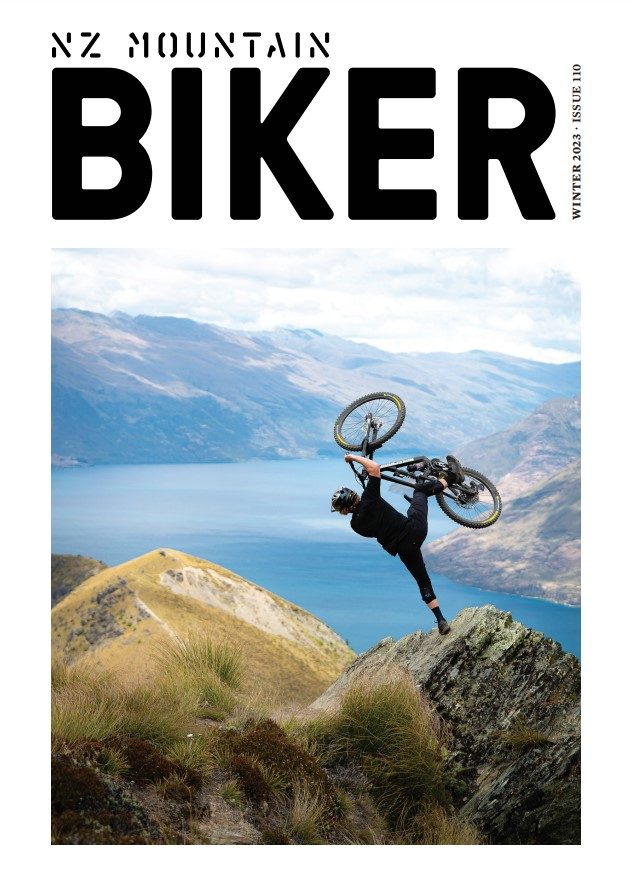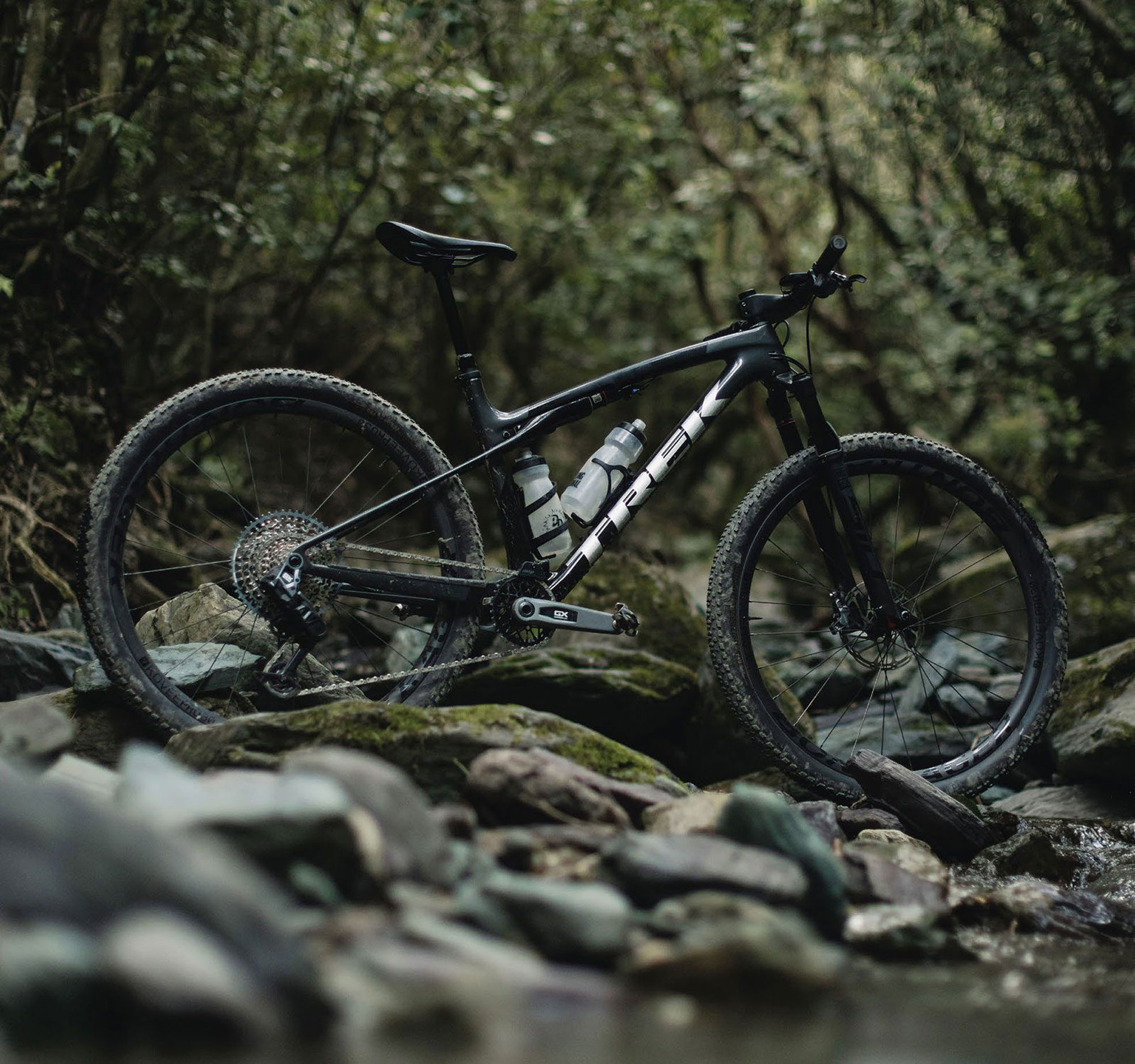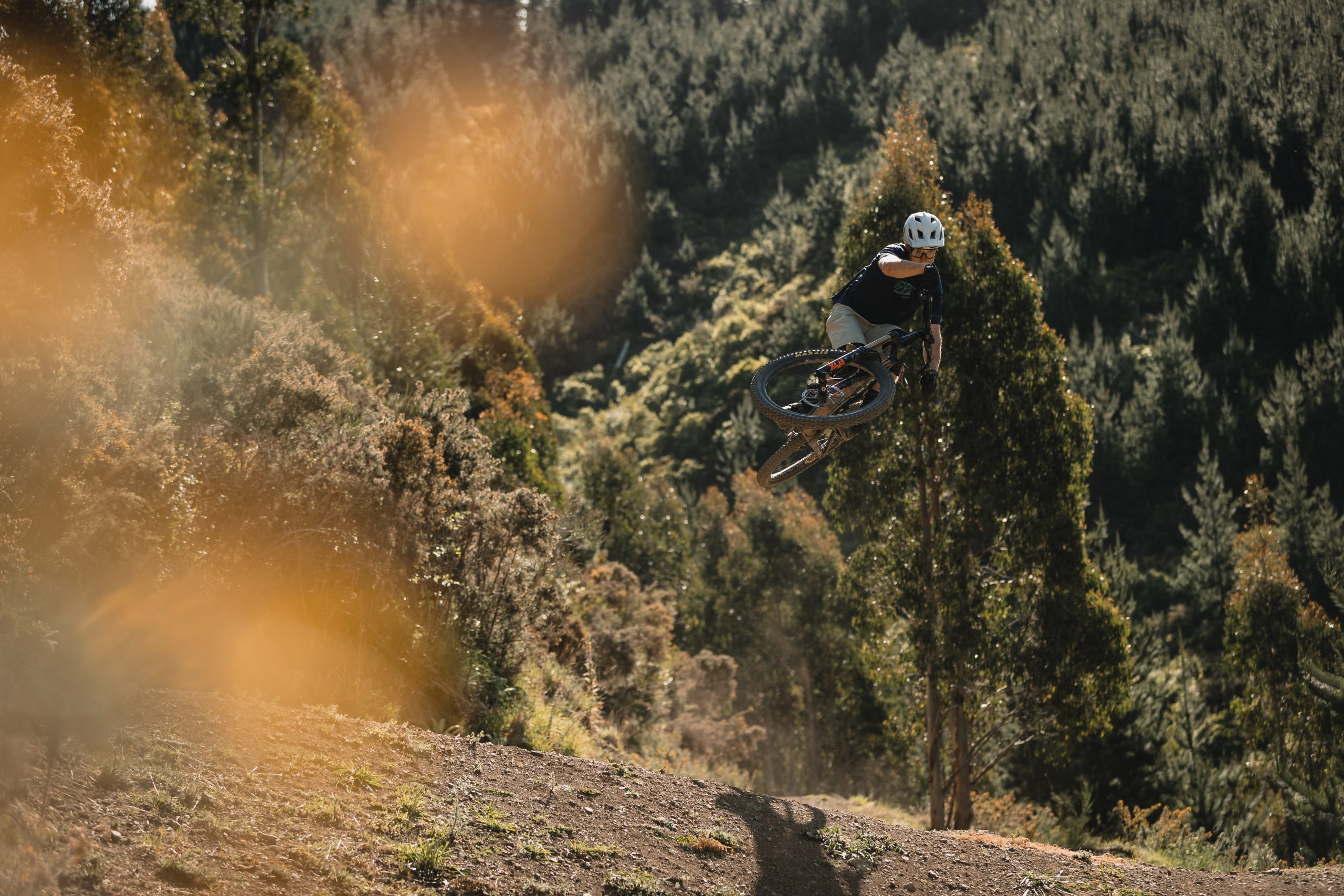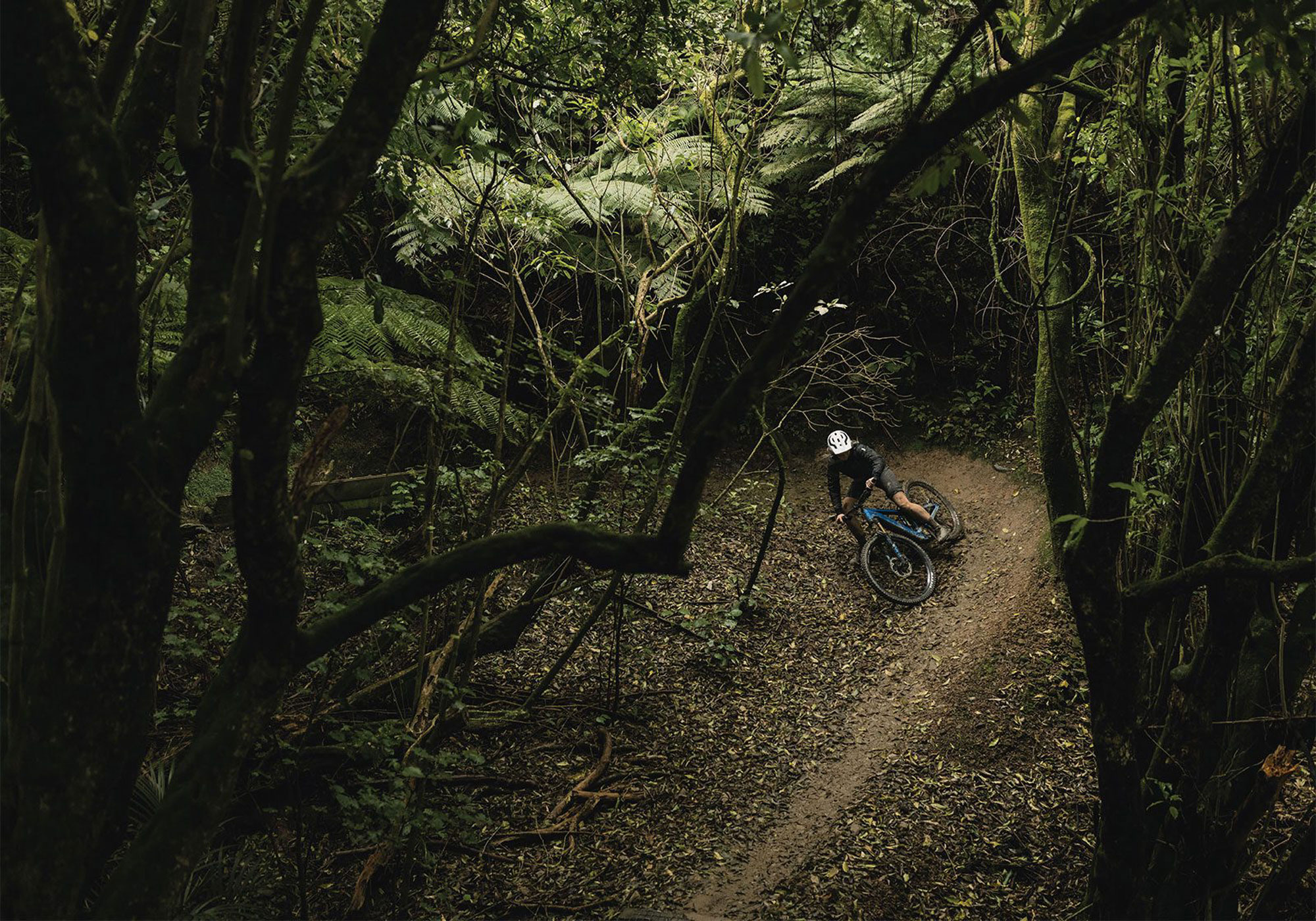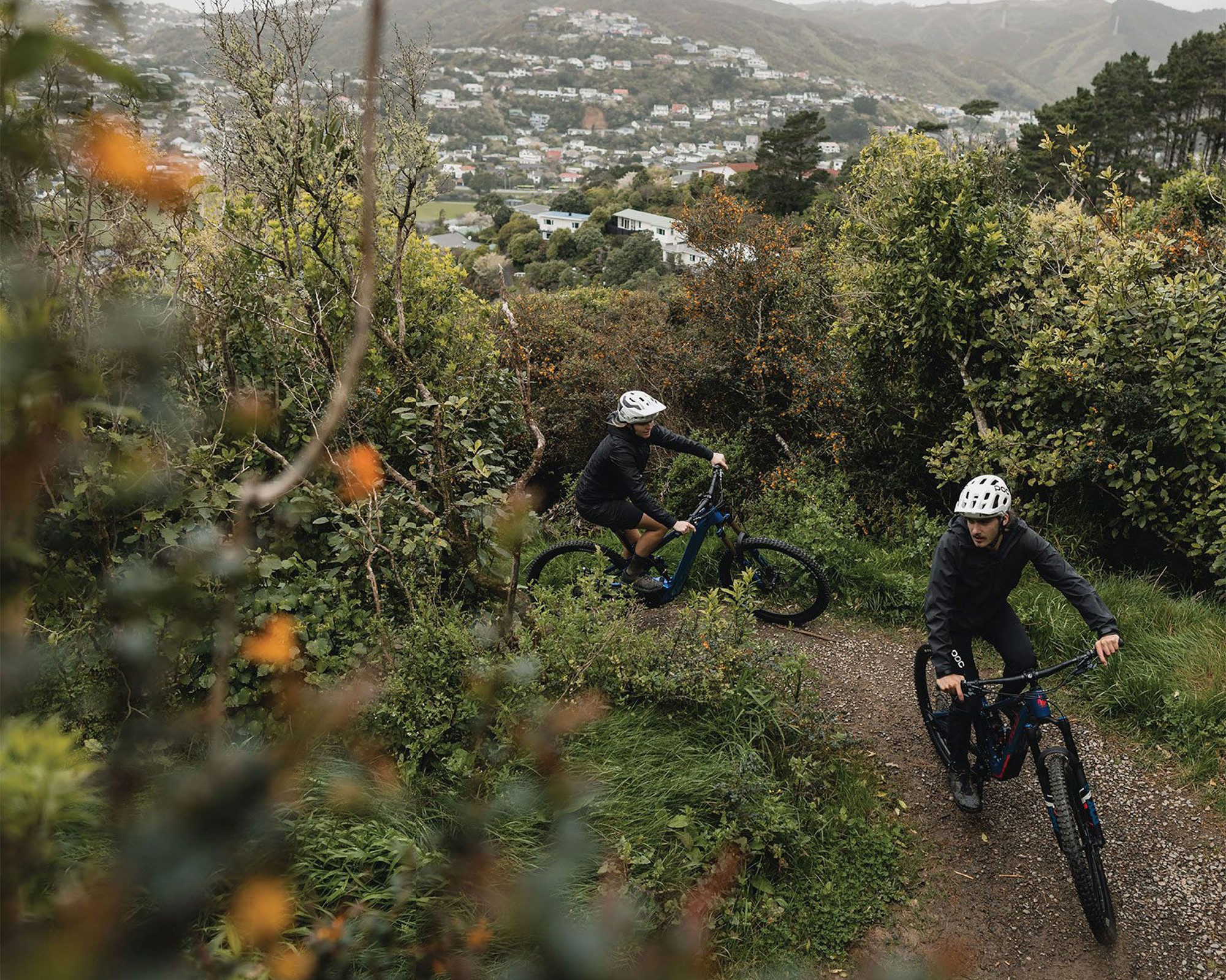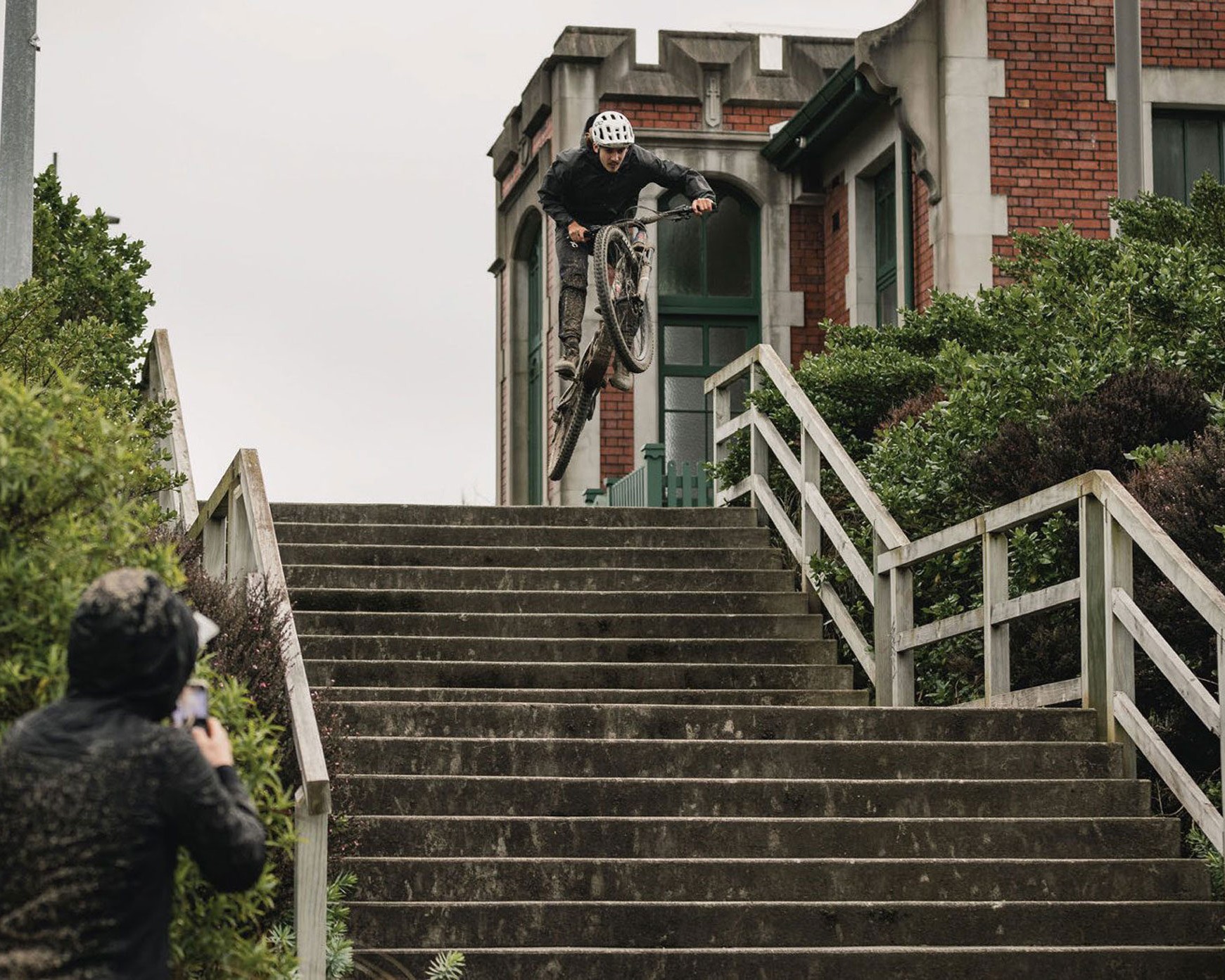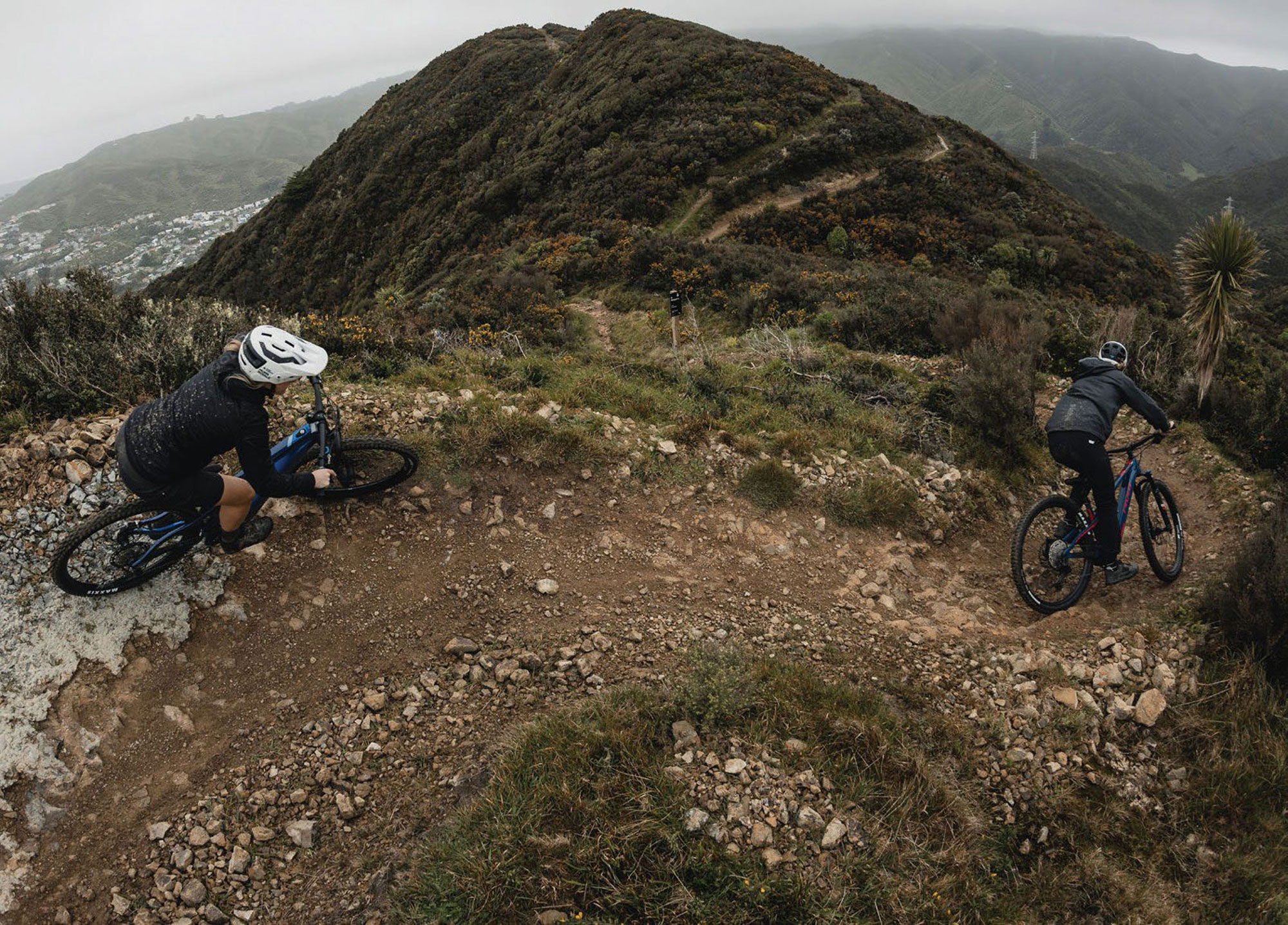Trek Supercaliber SLR 9.8
Words Liam Friary
Images Cameron Mackenzie
RRP $12,999
Distributor Trek New Zealand
Flick back through your iCal to mid-2019, and the cheese-curd lovers from Trek bicycles in Madison, Wisconsin, would have just launched a category-defying, new cross-country race bike: the Supercaliber. A short-travel, full suspension bike that rivalled the efficiency of a hardtail, but with just enough travel to ease the blow when trails got spicy.
The bike carries the moniker from Gary Fisher’s OG Supercaliber, released for model in the year 1990. The Fisher brand, and Supercaliber name, were eventually acquired by Trek, after which it was filed away for several years, only to resurface on the first generation Trek Supercaliber in 2019.
To the uninitiated, the fresh Gen 2 Supercaliber looks almost identical to the first. The top tube is slightly straighter (rather than noticeably curved on the Gen 1) but the clean, racy lines remain – as does the heart of the bike: the IsoStrut suspension, this time bumped up by 20mm to 80mm travel. Gen 2 has some incremental changes across the frame material used, geometry, and specs. None of these things alone are groundbreaking but, combined, they’ve enabled a leap forward to modern times for the Supercaliber.
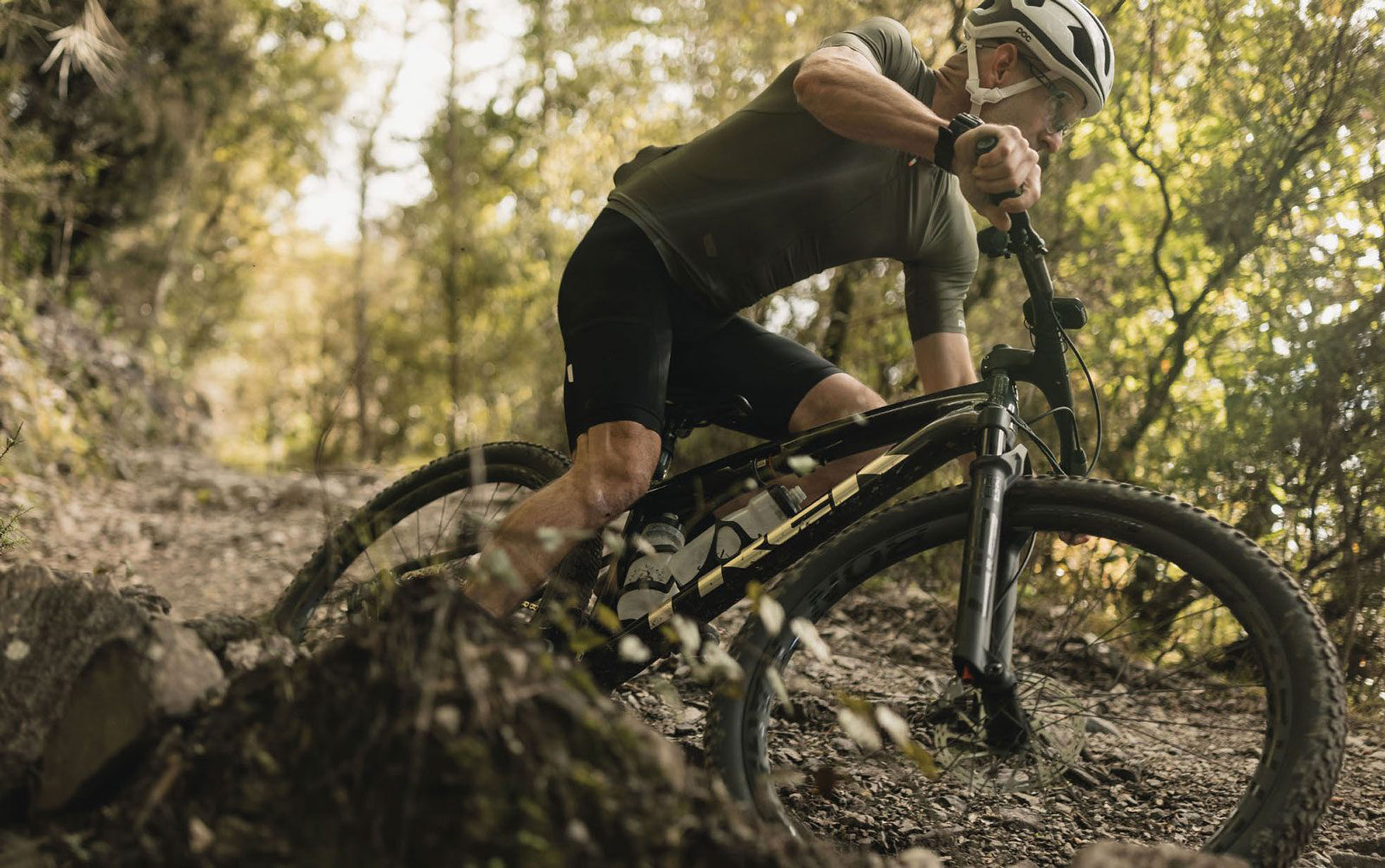
As World Cup level XCO courses have become more technical, the equipment used to compete has evolved. Where the previous generation’s 60mm of rear travel and subdued geometry was suitable back in 2019, it’s long been surpassed. Although Gen 1 is still a favourite for racers – and even some bikepackers – here in NZ, a few brands now have similar offerings and the Supercaliber has been left behind. Until now. This redesign brings the bike up to meet the needs of a modern racer while retaining the comparatively short travel and snappy handling of its predecessor.
The Supercaliber frame is now available internationally in two tiers. The premium SLR version features a low Fibre Areal Weight (FAW) achieved by using a higher-modulus carbon lay-up and less overall material. Intended for wireless gearing, the SLR sheds further weight by not incorporating internal cable guide tubes. All Supercaliber models feature the same IsoStrut swingarm and shock.
While visually the lines remain almost unchanged, the geometry has stepped forward into the modern age with the bike getting the now common longer and slacker treatment. Not one to push the boat out too far, Trek have slackened the head tube angle to 67.5 degrees from 69 on the Gen 1, and stretched the reach from 450mm to 465mm on a large size, with scaled increases across the size range. The seat tube angle gets bumped a minor half-a-degree steeper to further centre the rider’s weight, for climbing prowess.
The swingarm is suspended by a frame-integrated RockShox SIDLuxe shock. New to the bike this year, it’s a bit simpler than the previous Fox edition and is now more easily tuneable. The shock is designed specifically for the Supercaliber but shares the same traits – even some hardware – as other Rockshox suspension products. The swingarm itself has no pivot at the rear axle, relying on the tuned flex of the seat and chain stays for its vertical compliance. The shock has 15-35% sag markers anodised on its stanchion, making fine-tuning for specific courses or conditions a simple, one-person affair. That lack of pivots on the rear triangle helps to bolster lateral stiffness and ensures every watt makes it to the wheel.
The back end of a bike is only ever as good as the front; the rear wheel follows the front after all. Up front, we find the new Rockshox SID fork with 110mm of travel – 10mm more than the previous – although the bike is designed to take up to 120mm. With a DebonAir spring and new Rush RL damper, I’ve found this fork more supple and active than my own bike’s previous edition SID Ultimate. I’ve got no qualms saying the new SID is as good as it gets for an XC fork. Stiff enough in all scenarios thanks to its 35mm stanchions, it tracks the ground exceptionally, helping the front wheel track and maintain traction, as well as easing the pain on the hands and arms of the rider.
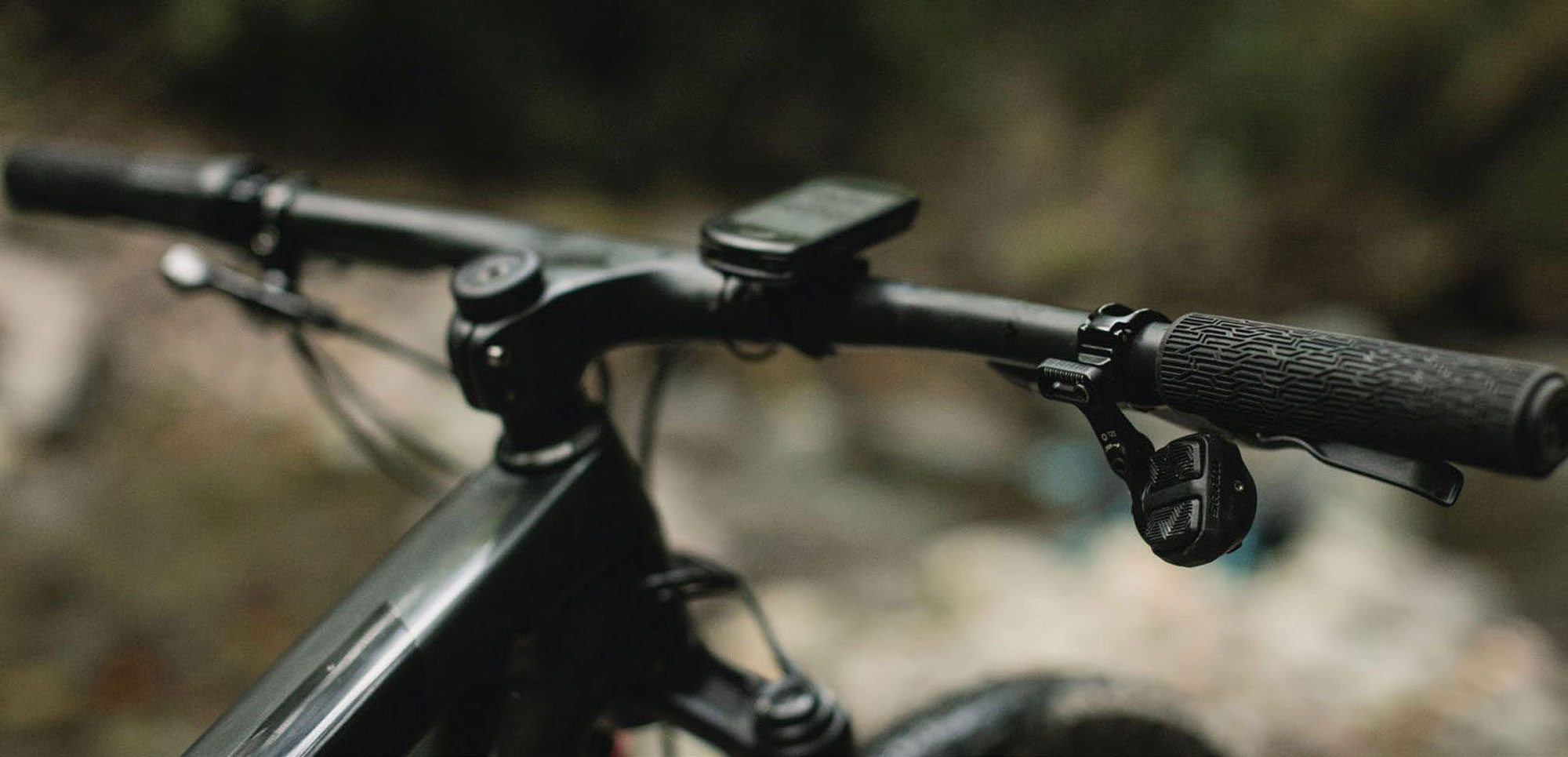
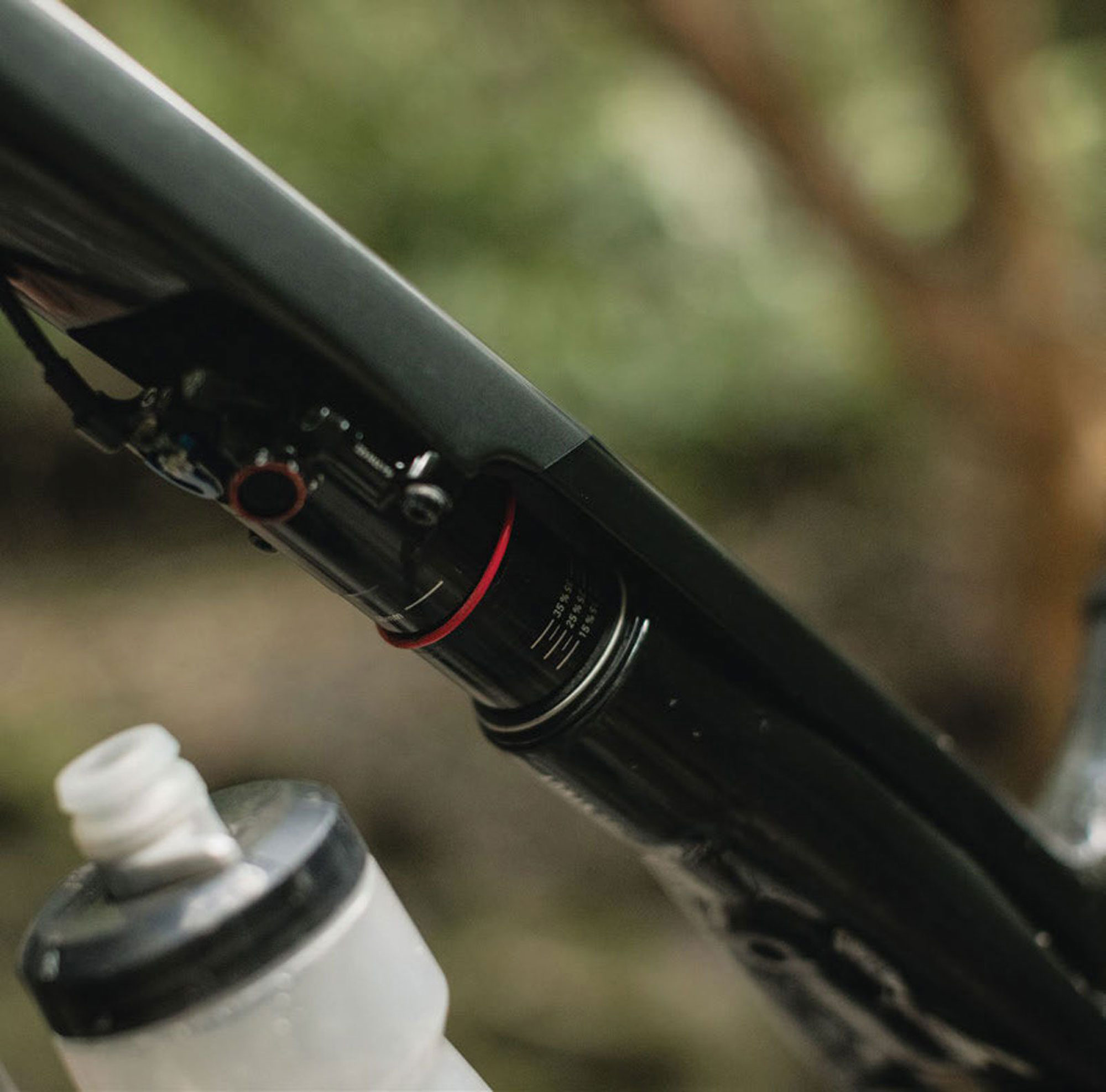
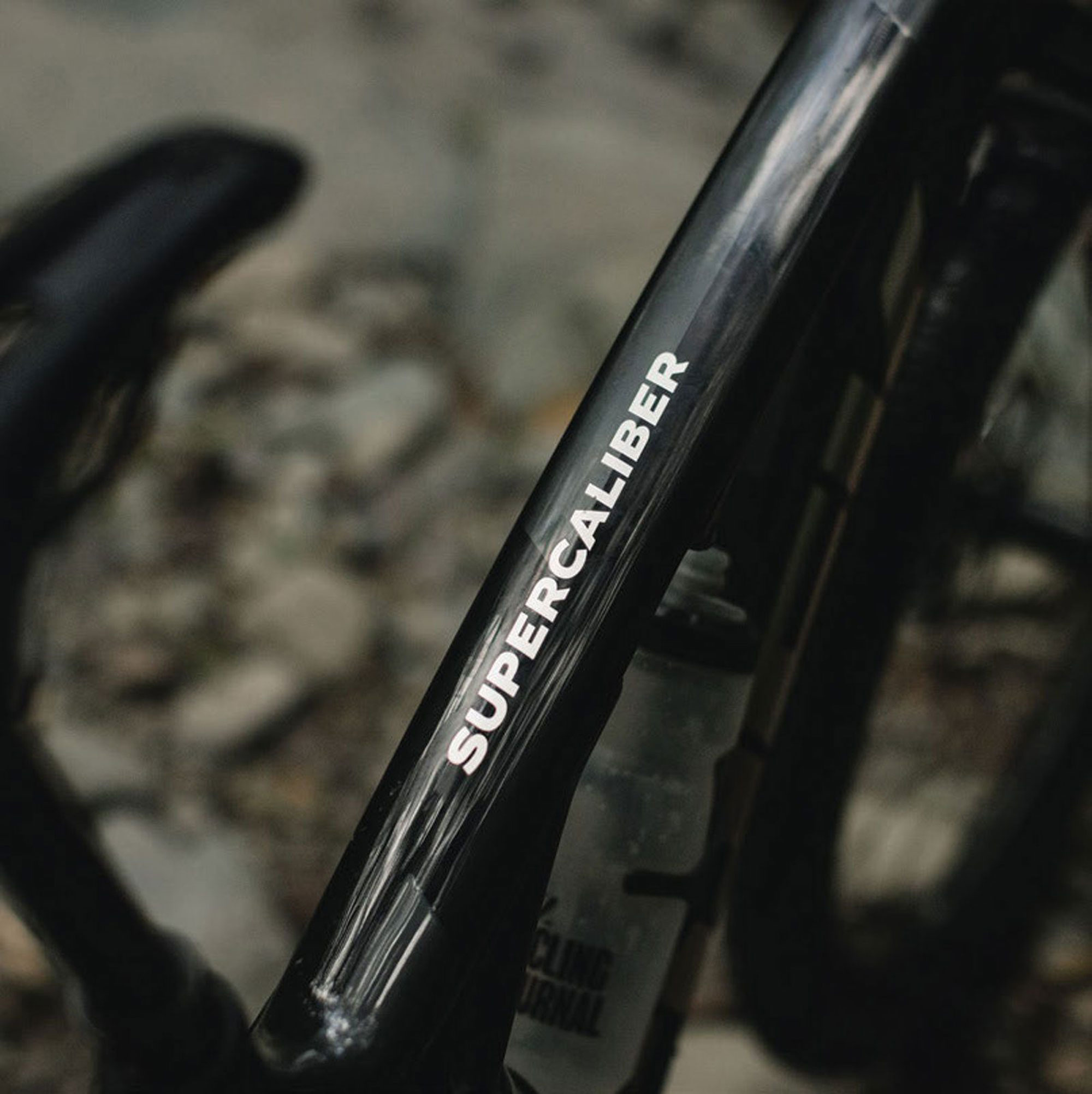
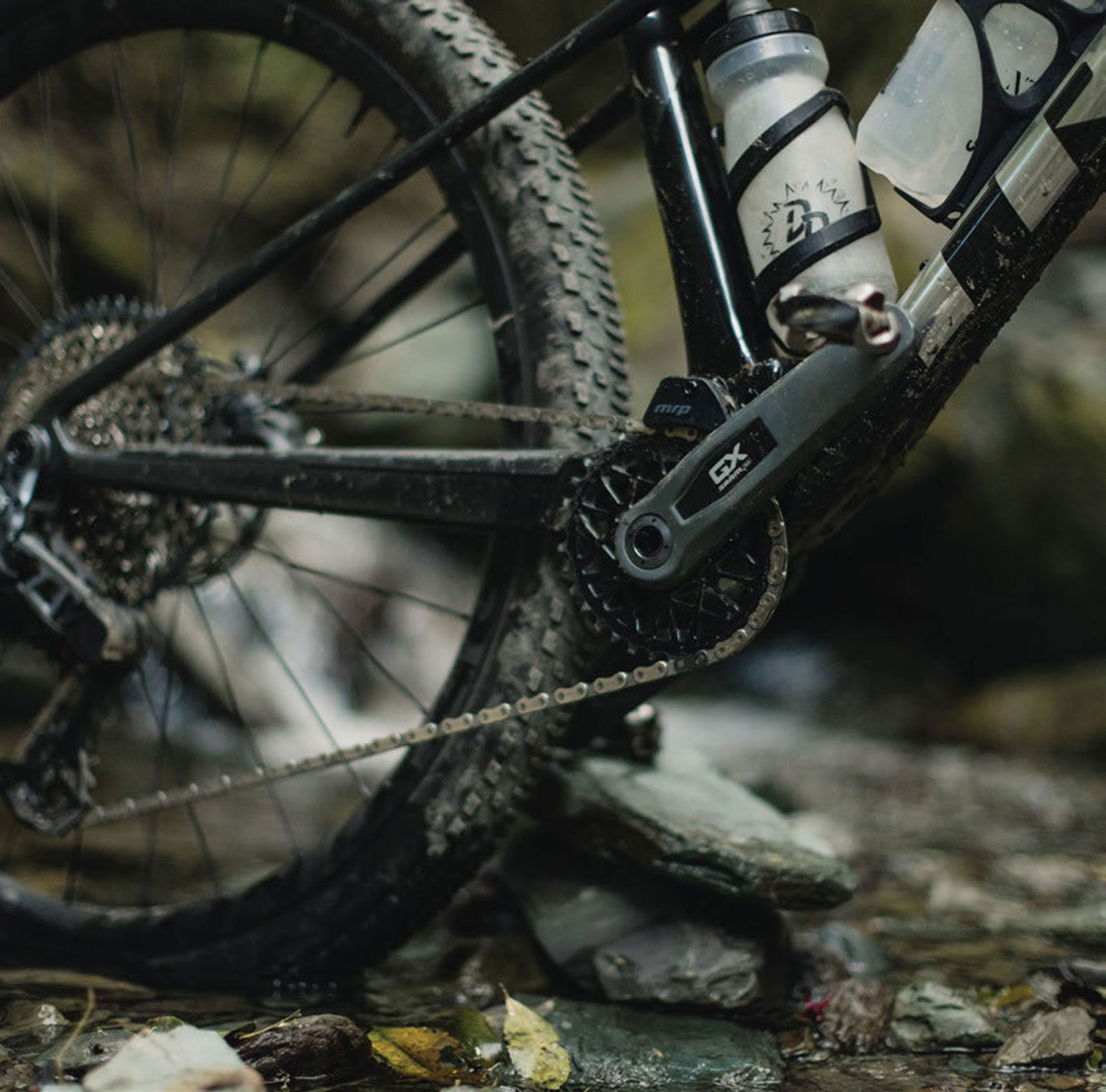
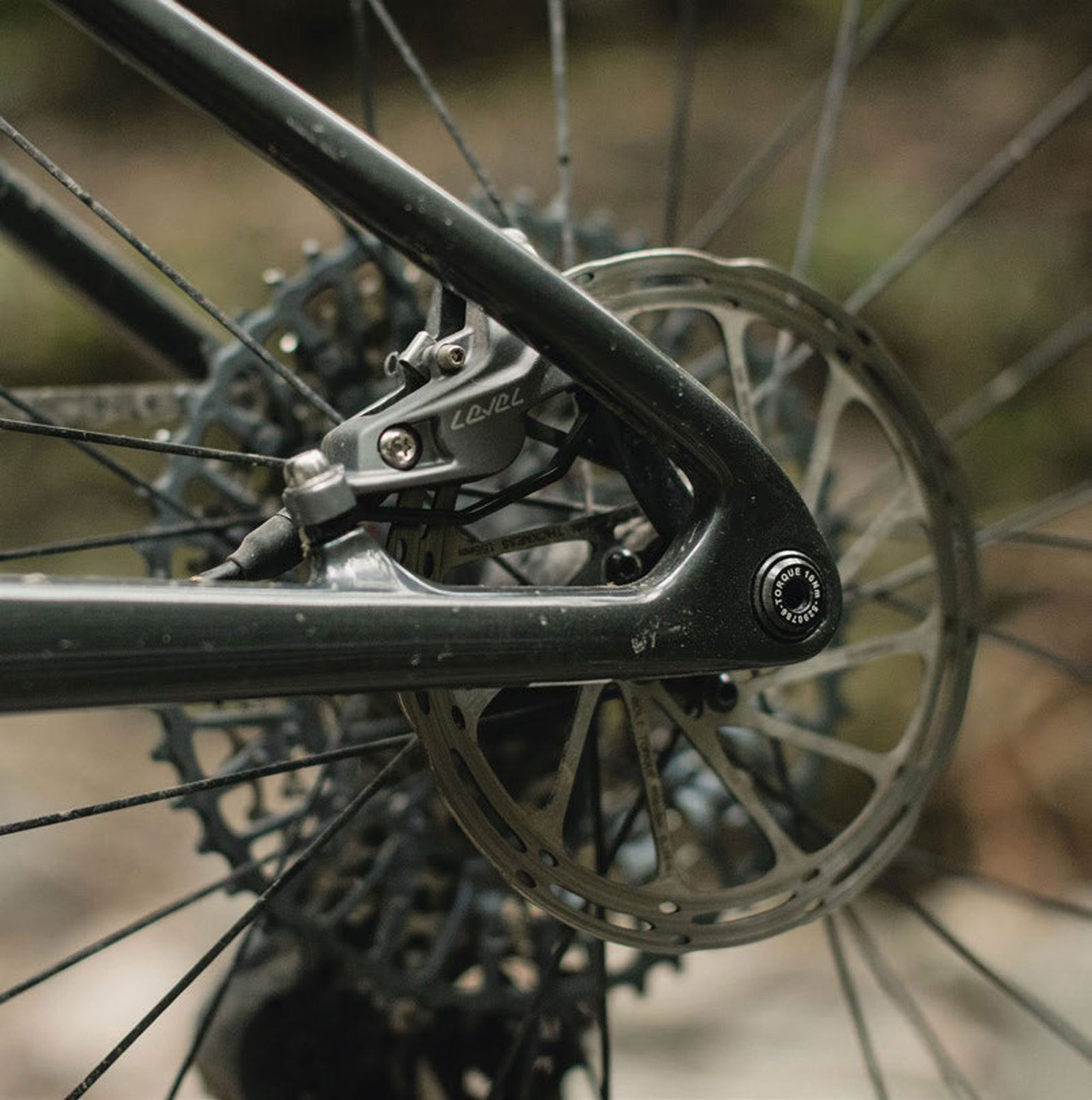
Both the SIDluxe shock and the SID fork have lockout cables running back to the new TwistLoc Ultimate remote lockout. This new TwistLoc blows the doors off the vulnerable, previous editions. A twist towards the rider to lock, and away from the rider to unlock with a positive click, audible and tactile -perfect. My only comment on this new remote is that the cables exit at 90 degrees from the unit, upsetting the clean lines of the Stealth brakes and cableless AXS shifter – somewhat unsightly compared to the clean brakes, but at least it works well and is trouble-free, so far.
A trait of the IsoStrut suspension layout – and hiding the shock away inside the frame – is that there’s plenty of room in the front triangle for water bottles. I was stoked to see a 900ml bottle fit comfortably on the downtube of the large-size bike, even with a regular cage. A 600ml fits comfortably on the seat tube, although I did need a side loading cage to make it work smoothly. Sure, it would be good to fit a 750ml bottle on the seat tube but at least you’re better off than many bikes with only a single bottle.
Our test bike was a size Large. At 176cm tall, Trek’s size chart would suggest I’m in the middle of the bell curve for their M/L size, at the top end of M and right at the bottom of the recommended height for a Large, so there is some cross-over available depending on a rider’s particular attributes; i.e. leg, arm, and torso proportions.
Surprisingly, the Large size didn’t feel too big and unwieldy for me, although I imagine the M/L’s 15mm shorter reach and consequently shorter wheelbase might have increased how nimble the already snappy bike felt. A minor tweak I made was to swap out the supplied 175mm crank for a 170mm length. This is a somewhat personal preference, but it does seem a lot of top-end riders are going for a shorter crank these days too. It’s great to see Trek speccing a 170mm crank on the Small and Medium sizes, although I do wonder if the M/L should also be fitted with these. It’s nice to see a 34-tooth chainring specced, and there’s room to fit an Anton Cooper-esque 38-tooth if your legs are up to the task!
With the sizing out of the way, it was time to get set up and ride! Consulting the Trek website, their Suspension Calculator gave me some baseline suspension pressures to tune from. The bike was pretty spot on with the suggested settings, but I preferred a couple of clicks slower on the fork rebound, and a click slower on the rear. At the suggested pressure, the IsoStrut-supported rear end sat precisely at 25% sag.
During its maiden voyage, I found the back end a bit harsh over successive hits compared to my regular, more down-country style bike with 120mm rear travel. This was no surprise as it’s a completely different style of bike, so I upped the sag to 30% for my next rides and found this to be nicer for descending but not quite as efficient while climbing, although the lockout did the trick here. My thinking is that around 30% sag is ideal for a long day on demanding, rugged trails, a ride where optimal climbing isn’t the goal, or a shorter XCO track with substantial rough technical downhill sections. For a smoother course, or a marathon-type effort with limited rugged sections, 25% or firmer would keep things efficient and lively, offering enough kush to keep things controlled on the descents, but lightning quick on the pedally bits.
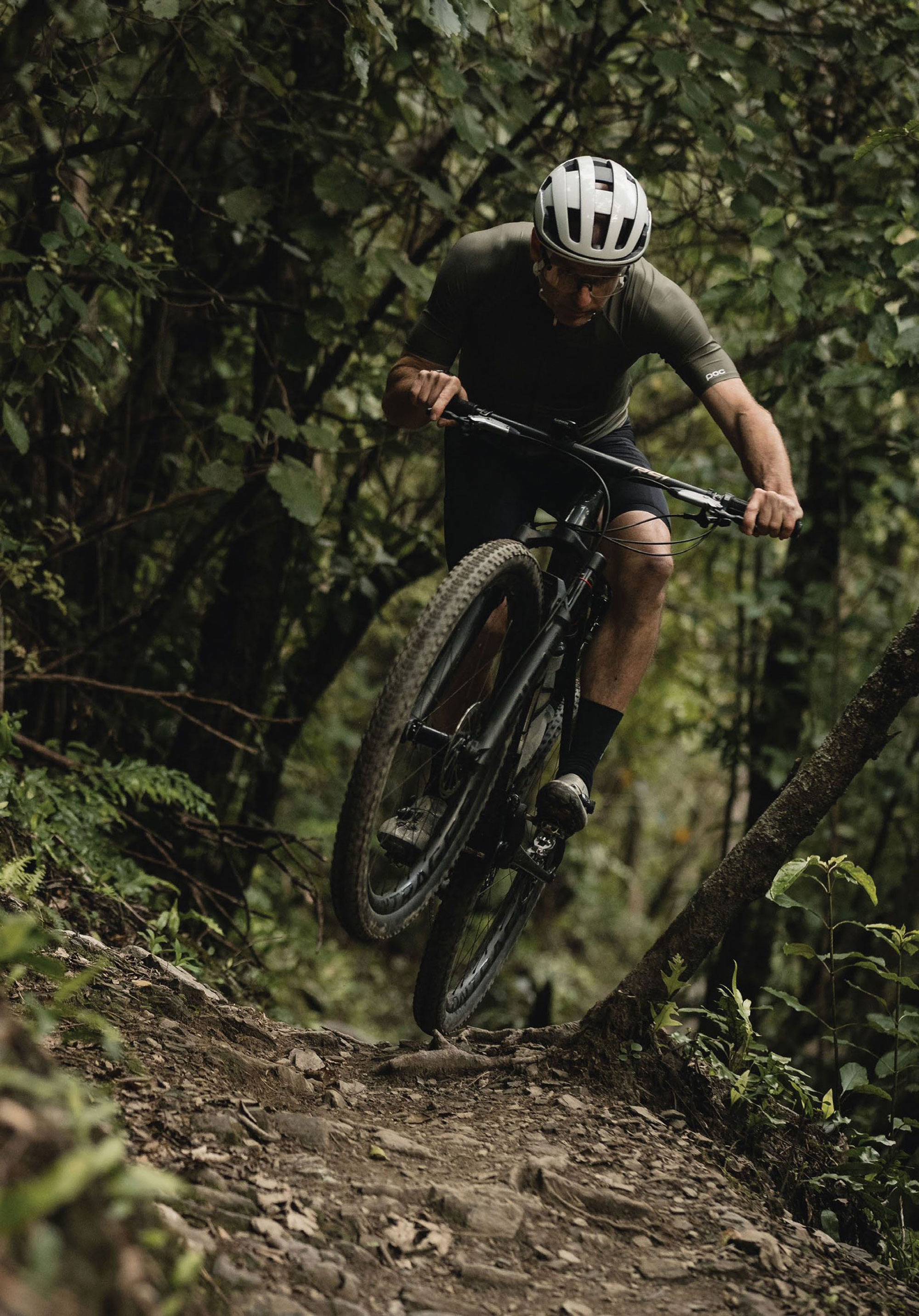
Pedalling efficiency is upped on the Gen 2, by a tweak in the main pivot position, moving it upward a touch and forward slightly. This seemingly small change has raised the anti-squat number considerably, meaning the suspension is less active while pedalling, absorbing fewer of your precious watts. The bike does really get up and go when you lay the power on!
The RSL one-piece cockpit is as polarising as a tyre choice. I’ve had people come up to me and slate the Bontrager one-piece bar/stem setup, and others approach me to tell me how much they like it. As far as the shape goes, I’ve found it fine and although different to what I’m used to, I adapted quickly. The Large bike gets a 750mm width bar moulded to a -13 degree 80mm long stem. The set-up is stiff, that’s no secret, but my gut feeling is bringing a more compliant bar to this cockpit party might change the bike’s handling a bit. The stiffness of the bars is in keeping with the overall stiffness of the frame and wheels, etc. So, while they might not be for everyone, I think given a few rides, correct suspension and tyre pressures, this cockpit helps bring the best out in the bike. I do wonder if the fact you can’t adjust the sweep of the bar by rolling it forward or back, relative to the angle of your arms, may mean that your arms sit at a different angle to the bars than optimal (due to overall setup). If you want to try a different length stem then you’re in for a new stem and handlebar too, but at least they’re simple to change with no crazy stem or headset cable routing here.
Trek’s mountain bikes are renowned for having short head tubes, and the Supercaliber is no different; 10cm on this Large, while XL gets a 12.5cm, and all other sizes a 9cm head tube. This allows riders to fine-tune their stem and handlebar height across a wide range. Go from pro-level slammed, to bike-packer high-rise handlebars with a simple swap of spacers. After my shakedown ride, I switched a spacer and dropped the stem 10mm from stock, putting a little more weight over the front end and seating me in a more comfortable pedalling position, without being too aggressive. I’ll likely drop another 10mm spacer out and lower the front end further as there’s plenty of room for adjustment and experimentation.
Being an out-and-out race bike it would be a waste to just take it out for some rides on familiar trails in an attempt to get an accurate gauge of how it rides. A rig designed to win World Cups is best tested in the exact scenarios where it’s designed to excel and be pushed towards its limits, something that’s not easily replicated outside of an actual race. With this in mind, I entered the inaugural Whangamatā Black Rock XC race. With 60km and 1800m of climbing, the 3-lap course was no joke. Granted, the bike is designed for shorter, punchier XCO-style races, but the reality is that, here in NZ, longer marathon-style events will likely make up a large portion of the race action a bike like this will see. It’s also likely to be popular with the bikepacking crowd, just as the Gen 1 was.
I had a good number of hours aboard the bike before the event, and was feeling pretty comfortable aboard this rocket ship, but actually putting it right in its element really gave me a true appreciation for just how good a bike of this level really is. Out of the start, we were tussling for the first single track, in and out of the saddle, avoiding a near pile up on the first corner. We were strung out entering the first single track climb. The SRAM GX Transmission is ideal in situations like this; whatever unfolds in front of you, you can rest assured that if a gear shift needs to happen, it will. I had no qualms firing through gears under full power, seated or standing.
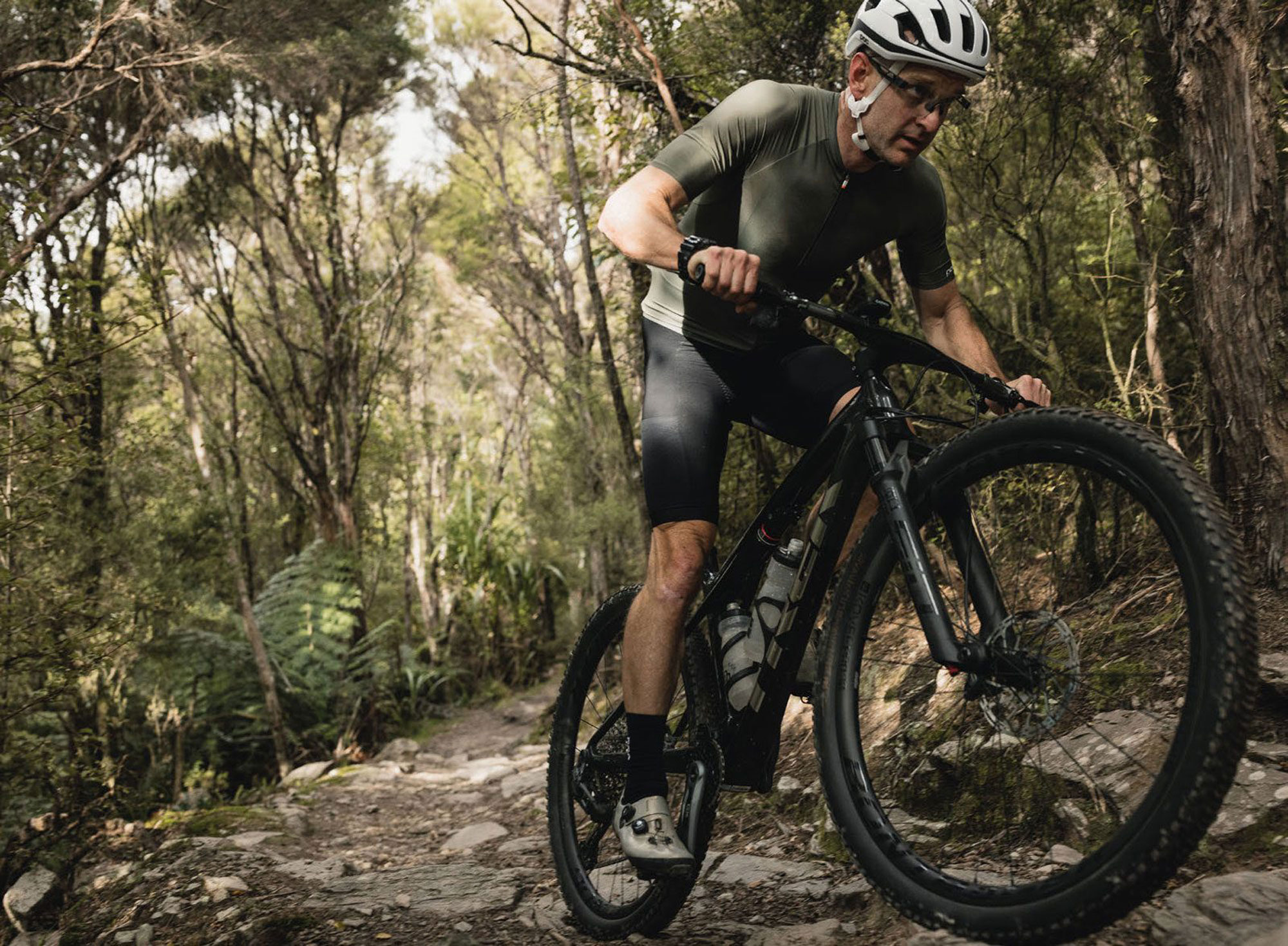
Most of the trails in Whangamata are clay-based and certainly pretty spicy in the wet! After some rain the day before, I was stoked to see blue skies for race day and, although the majority of the trails were either dry or close to it, enough moisture remained in the dirt, in sections, to make things unpredictable at times. At first glance, I wasn’t sold on Bontrager’s new Sainte-Anne RSL XR tyres. The central knobs are very closely spaced for rolling speed, but the shoulder and side knobs are widely spaced and low profile. I wasn’t expecting much from them, particularly in the damp. Surprisingly, though, they hooked up adequately thanks to the combination of said tread pattern, a 220 tpi casing, dual rubber compounds, and the ability to run low pressures thanks to their large 2.4” volume. Traction was surprisingly good and, even in the few truly slippery sections, the grip was predictable. There wasn’t really any section of trail I felt the tyres were majorly lacking, but they certainly excelled on dry hardpack and gravelled sections, maintaining speed really well. For a properly wet race, I’d be opting for something with deeper tread for sure. The tyre volume, coupled with the Kovee Elite wheels’ 29mm internal width, offered sure footing even under the heavy G-forces when railing some of Whangamata’s seriously good berms at full pelt -no tyre roll or sketchy moments.
There’s certainly something special about the feeling you get from racing a bike like this. When you really put the boot in and power up a short, sharp, technical climb, it just feels like every watt you’re putting into the pedals is propelling the bike forward; no flex, no suspension bob, just pure unadulterated forward momentum. One particular section at the Black Rock was a prime example of this; a climb through a section of forestry slash and up a sharp pinch back into the pines. Turning right into the slash, a majority of your speed was scrubbed off and you were presented with 100m or so of partially covered logs and scrap, creating steps and obstacles to navigate your way across, up and over. Rapidly laying down the power, the bike shoots forward, the transition hopping up a step to full-gas pedalling nearly instantly thanks to the Freehub’s 108 points of engagement. I’m a huge fan of the Bontrager hubs; simple and effective. The overall light weight helped me hop over obstacles and up over the final pinch – again, out of the saddle, under full power and on a loose clay surface. The bike was well and truly designed to dominate techy sections like this, and the momentum I could carry quickly extended the gap to the riders behind.
Climbing gravel roads, or smoother consistent- grade trails, is undoubtedly a strength of the Supercaliber. Its low weight, suspension kinematic and prime seating position combine to create deadly efficiency that helps you stay on top of your gear for longer. Coming off my longer-legged, heavier bike the difference was considerable and over the length of the Black Rock XC, climbing was where I made most of my gains in the field – most unlike me. With that said, it never gets easier… you just go faster! As efficient as this bike pedals, I found locking the suspension out on smooth sections helped get the most out of every pedal stroke, particularly when running the 30% sag, and there’s enough give whilst locked out to not beat you up too much.
Descending from the top of the main climb, we had the choice of two lines: to the left the A-line, a fall-line style section with no clear main line and a snake pit of roots crisscrossing the entire descent – and it was plenty steep. To the right side of the A-line is the B-line – a clean, digger-built, flow-style trail; it’s longer but faster and, overall, the time difference between the two lines is negligible. On the first lap, I took the left line. Having not pre-ridden any of the course, I wasn’t sure what to expect. This A-line was where I started to figure out what this bike is about on the downhills, and it highlighted that descending isn’t just about suspension travel. When it’s pushed, its minimal-yet-effective 80mm of travel has enough forgiveness to confidently hold a line. Aided by how stout the entire package is, and its modern geometry, the bike holds a line well and is balanced and stable while descending. No wet-noodle, flexy XC frame here. In these exact scenarios, I’ve ridden longer-travel bikes which handle much worse and suck your confidence by flexing and twisting under the heavy braking and the hits they’re taking. Situations like this are where the stiffness of the one-piece cockpit shines; a distinct lack of flex helps you keep things pinpoint and accurate. On this descent, I was thankful for the dropper post. It’s 150mm travel allowed me to get the saddle right out of the way on the steeps – props to those pro guys who still run fixed posts on gnarly trails! My only gripe on the Bontrager dropper post, is that the remote doesn’t integrate well at all with the SRAM brakes. It functions fine, but the clamp does interfere with the Stealth Brakes master cylinder, limiting how much adjustment you have with the remote. I couldn’t quite get it where I wanted it, but made it work.
For the laps following the first one, I opted for the B-line: a smoother, safer option while fatigued. This line was the highest speed section of single track in the race and gave a great indication of how the bike was at speed. The entire package felt solid through the upper highspeed berms and predictable off the jumps that followed. Further down the descent, however, some choppy gave a real-world example of the shortcomings of short travel. Under heavy braking, and through a section of braking bumps, the rear suspension felt somewhat harsh, causing the tyres to break traction and skip across the tops of the bumps. It wasn’t a big issue as this was basically a straight section of trail but, if it was much wetter, the lack of traction could have been a real issue coming towards the corner at the bottom of the section! This situation does highlight how the bike is bred more to take the place of a hardtail than be a supple descending machine – the suspension travel certainly has a damped feeling, as it needs to be with only 80 millimetres of it.
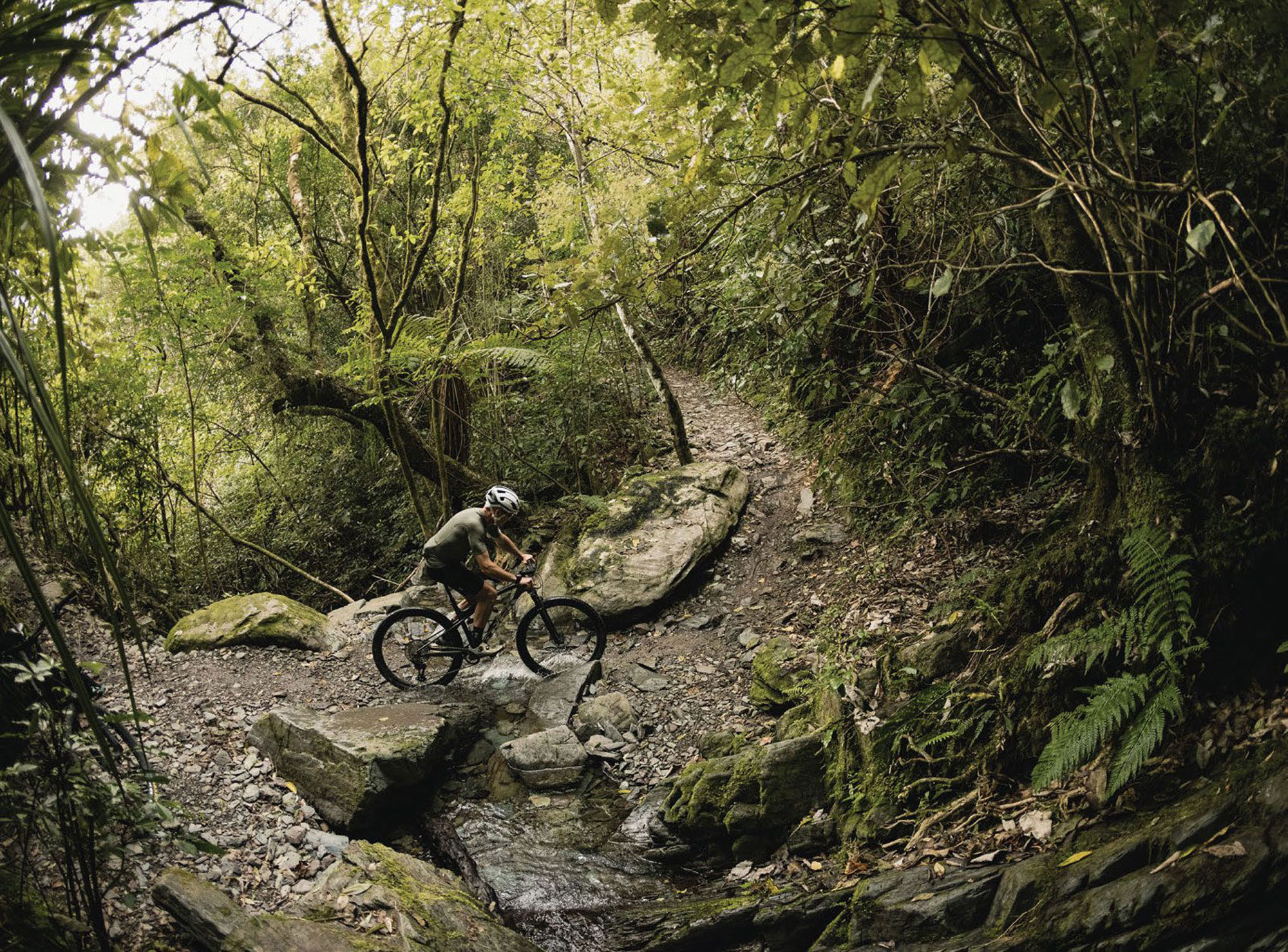

On the subject of braking; I was glad to have some time aboard SRAM’s new Level Bronze brakes, particularly their new Stealth levers. I’ve never been a huge fan of SRAM’s XC-oriented brakes, the lever feel was hard to get right and once you finally achieved a good, powerful feel, it only lasted a few rides then you needed to tune them again. Touch wood, but so far I’m impressed with these new units. The lever shape is familiar, but the feel when braking is more positive than previous and overall there’s plenty of power on offer when needed, if they’ve sorted the longevity issues these are a winner.
A small, partial floating brake mount is used on the rear, feeding the braking force to the chainstay and rear axle, keeping the braking forces from interfering with the flex in the swingarm. This brake mount seems to work effectively, but there is more torsional flex under braking than there would be from a traditionally mounted calliper. This doesn’t appear to affect the braking power, although at times it does affect how the brake feels. The front brake has a 180mm rotor stock, which is welcome, as many XC bikes are fitted with 160mm rotor up front. The rear rotor is 155mm stock, the max size allowable being 160mm. I’d personally like the ability to upsize rotors on the rear; giving heavier, real-world riders more stopping power, and helping slow down fully laden bikes when loaded for bike-packing, although it looks like there’s simply no clearance to do so.
The Supercaliber gave me an appreciation for how good bikes are getting these days and highlighted how it’s no one thing that makes a bike like this excel, but the sum of everything; frame, components, and geometry. The engineering team at Trek appear to have designed the bike as a whole system, with all parts complementing each other rather than designing a frame and haphazardly speccing it out. Had any of the elements been lacking I think the experience could be different.
The Whangamata Black Rock race was an awesome experience and, with its varied terrain, was a great way to put the Supercaliber under real-world review alongside training on it in the buildup. Although the Supercaliber has been designed more for the punchier 1.5 hour efforts of World Cup competition, it was well suited to the endurance-type effort of the Black Rock. If you’re looking for a race bike for any breed of XC race here in NZ, the Supercaliber would sure do the trick – don’t be put off by the small travel number as the geometry and handling well exceed bikes of longer travel.
If it were mine: I’d ride the M/L size, throw a set of 170mm cranks on there, have a set of gruntier tyres for wet racing, and try a standard stem and handlebar to see what difference there is. I’d fit a dropper remote compatible with SRAM’s brake lever clamp and a handlebar-mounted rear vision mirror so I could watch my competition as they disappear behind me!
Unfortunately, this bike removes any excuse for poor performance but, at least nothing is holding you back from that podium… aside from your own fitness and skill.
That’s a big tick from me on the Supercaliber. It’s not perfect – but it’s pretty damn close. The team at Trek might have a hard time prying it from my greasy mitts!
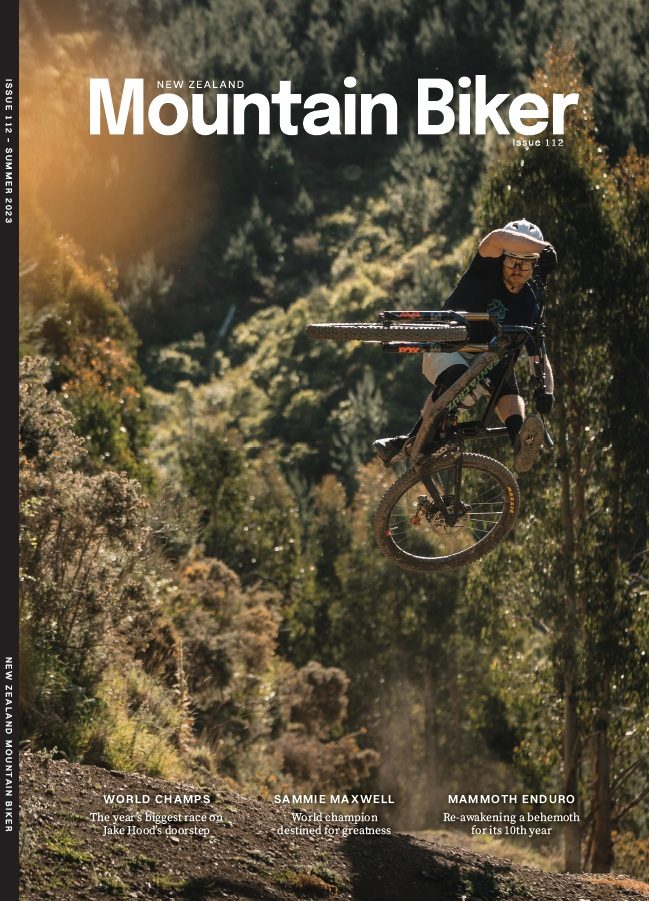
Legend of the Mammoth est. 2013
Words Lester Perry
Images Cameron Mackenzie
In recent years, Nelson has boasted the highest number of sunshine hours in a calendar year. It duked it out for the title with the Taranaki region in 2022, but lost out to not only them but to the Bay of Plenty, too. If second place is the first loser, what’s third place?
Sure, it’s still a podium finish but not necessarily something to write headlines about. Nelson’s ‘sunshine-hours’ crown is gone for now, but residents can rest easy that they have plenty of other accolades to sing about. It’s not just the big yellow orb in the sky bringing visitors to the area and, while the overall vibe and culture could be compared to that of Taranaki, there’s one major feather in Nelson’s cap that the ‘Naki can’t come close to: mountain bike trails. We’re not talking about the “mountain biking” your uncle and aunty do on the weekends aboard their folding e-bikes (although they have that too), it’s Nelson’s intermediate and advanced trails that bring those in the know to the hills behind the sunny town.
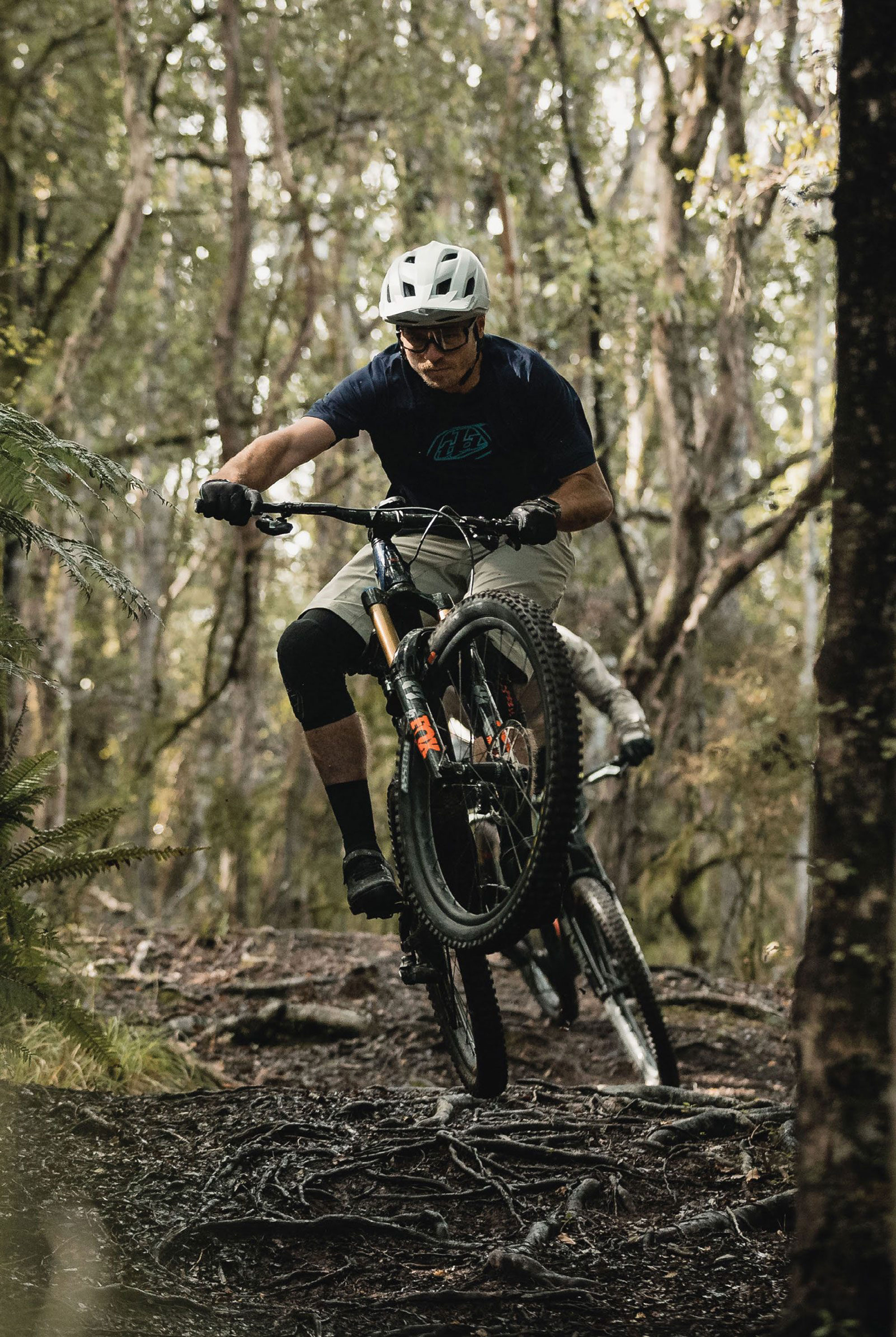

TOTAL DISTANCE: 58KM 2017
“THE MAMMOTH EVENT HAS BEEN A FIXTURE IN ONE FORM OR ANOTHER ON THE NMTBC CALENDAR SINCE THE EARLY 1990’S WHEN THE EVENT WAS A LARGE 40 - 50KM CROSS-COUNTRY LOOP; THE COURSE KEPT SECRET UNTIL REGISTRATION ON THE RACE MORNING.”
Arriving in Nelson, the relief of seeing our bikes being unloaded from the tin bird was short-lived, and shattered by the wide-eyed, confused look on our shuttle driver’s face, giving us a glimpse into what was about to unfold. Unfortunately, after some miscommunication and a major mix-up we were sent a small taxi to transport our three bikes (there were two of us) and an additional seven large bags (don’t ask) to our accommodation in town. With no taxi vans available in the area, we were left with two options -either load all the gear into multiple small taxis or rent an over-the-top expensive van for the short trip to town. Ordinarily, we wouldn’t need a vehicle in Nelson as, if you’re staying in town, the trails are just a pedal away and within a 15 minute walk you can get to anywhere worth going. So, renting was off the cards. Fortunately for us, a keen airport employee saw our plight and let us in on a hot tip: a public bus would roll in at any minute, it would likely be empty, and for the gargantuan fare of just $3 each we could be dropped to a stop just beside our destination. Sure enough, right on cue, the city bus service came to our rescue in one of their fancy new electric buses and left us with enough money in the coffers to sample some of Nelson’s finest hops later in the day. With a date for the Mammoth Enduro penned in the calendar for 23 -24 March 2024, and a few days free in early spring, it was the perfect excuse to head south on a quick trip to experience some of Nelson’s finest. We weren’t strictly hunting for time on the trails, but for a bit of chilled downtime while not on the bikes too. Chasing some local knowledge, we hooked up to ride with Nelson local and winner of the 2016 Mammoth, Kieran Bennett, and local fast-lady and Santa Cruz NZ representative, Amanda Pearce, as well as total frother, Tayla Carson, Nelson MTB Club’s (NMTBC) event portfolio head.
The Mammoth event has been a fixture in one form or another on the NMTBC calendar since the early 1990’s when the event was a large 40 -50km cross-country loop; the course kept secret until registration on the race morning. Club stalwarts, Bryce Buckland, Mike Gane, Andrew Scott and co. headed the event. Unfortunately, thanks to the rapid evolution of the event space, and the sheer number of events on offer by 2010, numbers had dwindled, and an injection of new energy was needed to keep the event alive. Chris Mildon ran it in 2011 as a big loop XC event with a smaller loop option in Sharlands, the last time it ran in that format. Andrew Scott tried a Rogaine format in 2012 but that didn’t really get any traction with entry numbers either.
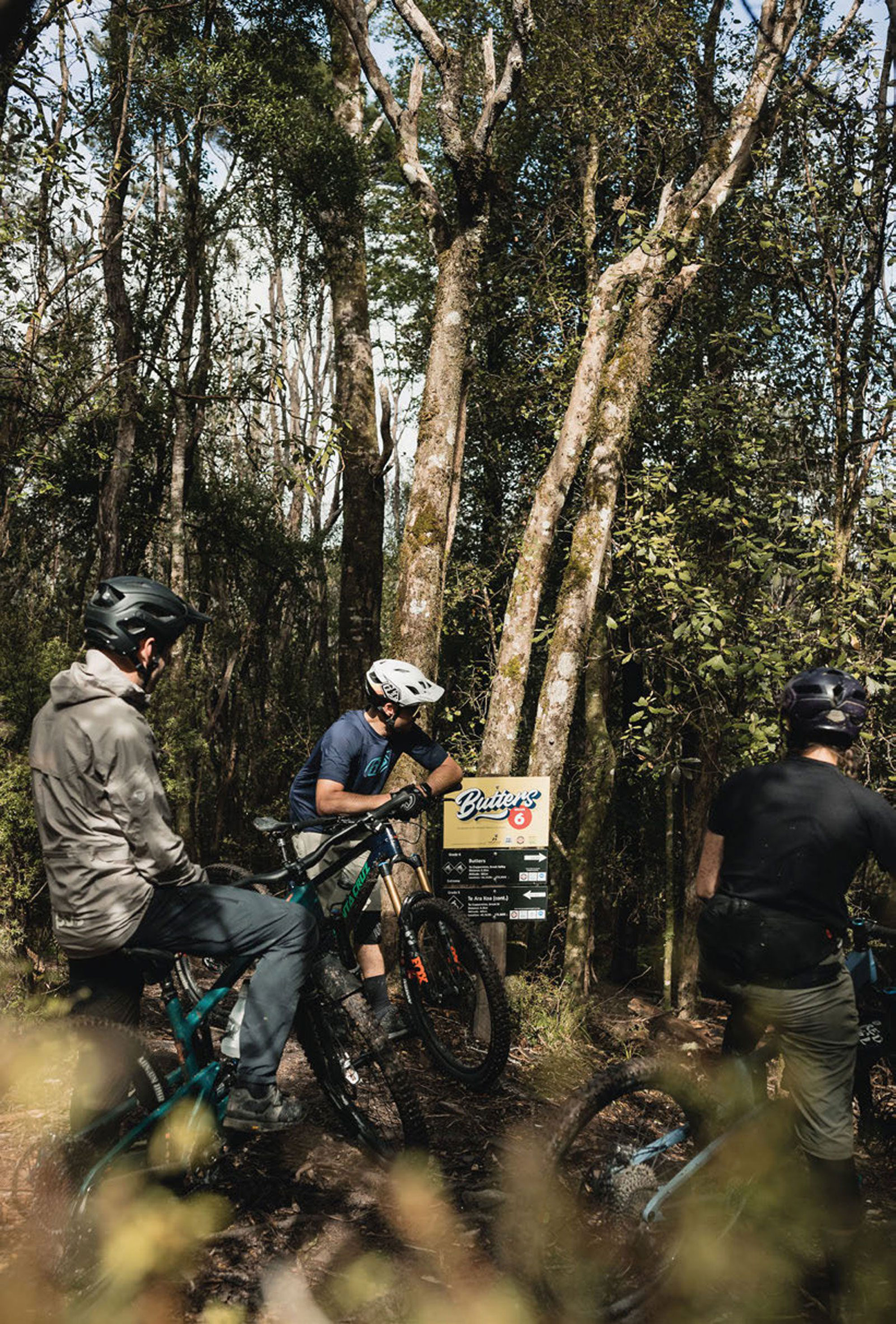

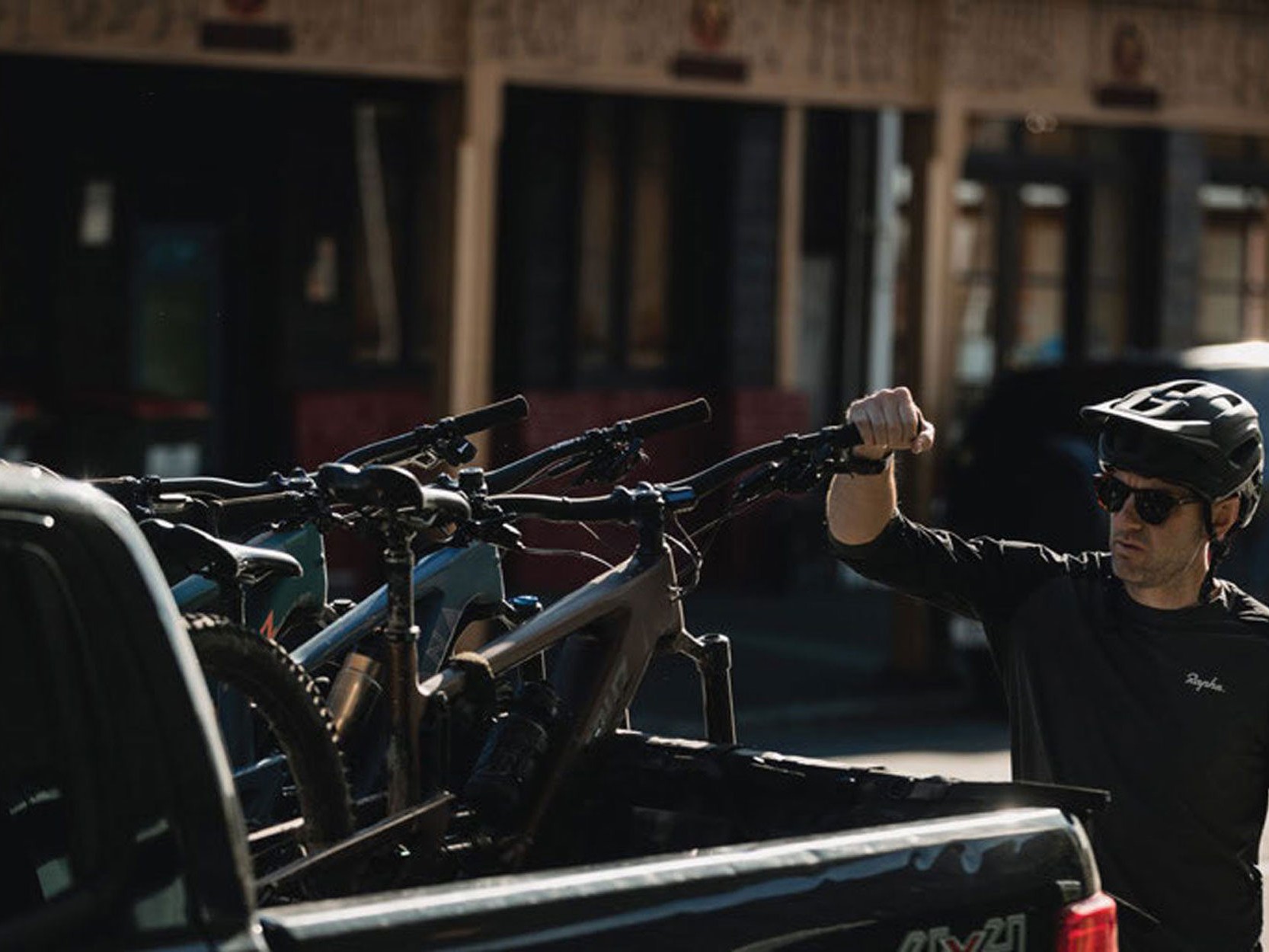
Come 2013, riding in the area was becoming increasingly Enduro-focused and, with an eye on what was happening in the discipline globally, the Nelson MTB Club grafted the Mammoth name onto a fresh -and epic -Enduro event. The Mammoth Enduro was born. With four hard stages – Codgers, Waahi, Takaaro, and Sharlands -no shuttles, and big liaisons, this is proper Enduro. The event has remained in this format since, with the addition of more stages and, on occasion, some shuttle assistance. The 2013 race attracted a host of local talent and set the tone for Mammoth’s to come. The longest of the four race stages ended up being just shy of 18 minutes for the eventual winner –local legend and trail builder, Kurt Lancaster who by race end stood atop the men’s podium. Meg Bichard showed her pace by being the fastest woman and showed the class which took her to compete in some of the world’s toughest Enduros.
By 2016, Mammoth had earned its title as the most demanding Enduro race in the country, with then three-to-six-minute long stages across two days. Taking the start line were a host of the country’s top riders, many of whom had spent seasons racing internationally. Justin Leov (former EWS and DH Pro) battled local downhiller, Kieran Bennett (ex-international DH rider) for the win. Bennett eventually took the victory by just five seconds. Loui Harvey was just 30-odd seconds back in third place. The women’s field traded blows over the weekend and, eventually, 90 seconds separated the top four: Meggie Bichard, Anja McDonald, Sasha Smith and Amanda Pearce – testament that Nelson had attracted a strong and competitive field.
By 2021, the EWS was in full swing around the globe, and NZ boasted a handful of leading Enduro talent, some of whom call Nelson home. NMTBC had put in a successful bid to host an EWS round in 2021, and 2020’s Mammoth was pegged as a qualifier round and warm-up of sorts for the following year’s big event. The race attracted the who’s-who of New Zealand Enduro. Names such as Eddie Masters, Charlie Murray, Rae Morrison and Cole Lucas lined up against a host of local talent and keen riders from all over NZ. One savvy racer had stashed a six-pack under the bridge at the base of 629 during practice, providing a welcome pit stop for a few riders mid-way through the sweltering race day.
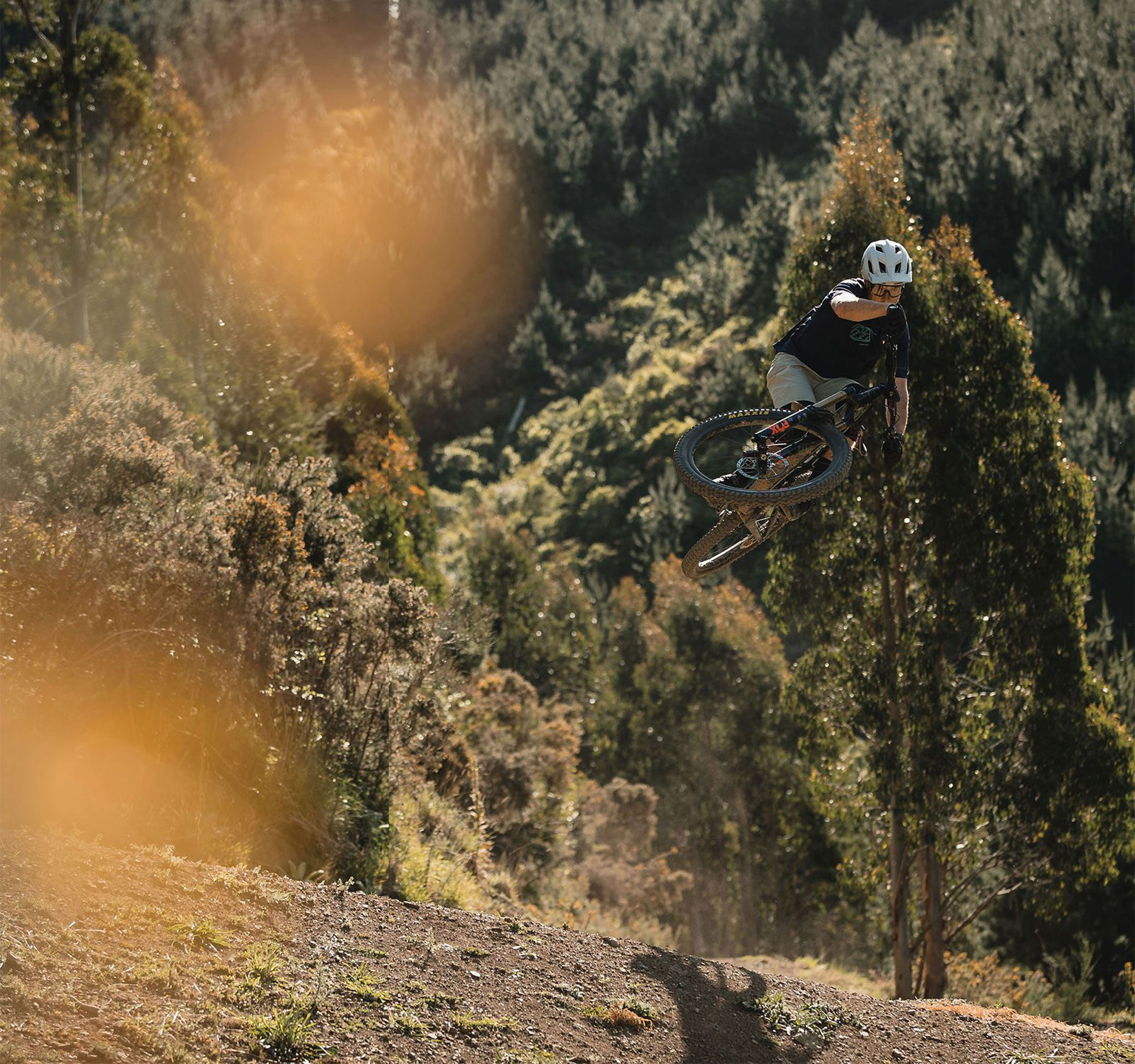
“COME 2013, RIDING IN THE AREA WAS BECOMING INCREASINGLY ENDURO-FOCUSED AND, WITH AN EYE ON WHAT WAS HAPPENING IN THE DISCIPLINE GLOBALLY, THE NELSON MTB CLUB GRAFTED THE MAMMOTH NAME ONTO A FRESH - AND EPIC - ENDURO EVENT. THE MAMMOTH ENDURO WAS BORN.”
Old mate Covid-19 ruined the party, putting an end to the club’s 2021 EWS dream, leaving months of planning scrapped. Even after a reschedule, multiple factors have meant Nelson’s EWS hopes have faded for the time being. Fortunately, NMTBC resurrected the Mammoth for 2022. Run under the Covid-19 framework, the event was restricted to just 100 riders. A scroll through the results confirms the event again attracted most of NZ’s heavy-hitting Enduro racers to its legendary course. Covid restrictions couldn’t kill rider’s enthusiasm for an epic couple of days racing. After coming through a turbulent, and somewhat disjointed, few years with their events and Covid now well and truly in the rearview, the NMTBC is working on a plan to alternate Enduro events yearly between the Mammoth and its little sibling, the Aorere Enduro. The Aorere will have fewer stages and friendlier liaisons, making it the ideal stepping stone to the Mammoth.
Reminiscing on the event’s history got us hyped to sample some of the trails previously raced, so we hopped on a shuttle with Gravity Nelson to the top of Te Ara Koa, Fringed Hill, to ride the now famous “Butters” – a trail 2.2km long that drops some 500+ vertical metres. Named in memory of Nelson MTB Club Member, Bernard “Butters” Simmonds, the trail opened in 2021 and quickly became a favourite of locals, and now sits in lore alongside legendary trails like 629, Peaking Ridge, and Whaimana. Butters was built with assistance from the Santa Cruz Bicycles ‘Pay Dirt’ fund’, which gave an injection of funds to help get the build done. Off the back of this, Hyperformance Hardware, Santa Cruz NZ’s distributor, have committed to help keep the good times rolling by assisting in funding maintenance of the trail for the coming years. Morning mist clung to the trees as we dropped into Butters, with the overnight rain making the roots slippery to begin with. A few mellow turns to adapt to the greasy conditions and we picked our way through the off-cambered corners up top, avoiding the Black Snakes (roots) which were trying to take our wheels out from under us. As the gradient tipped, the fun just increased as a few rocky drops and chutes were interspersed with amazing flowing turns and floaty jumps. Lower on the hill, we broke loose of the fog and popped out into a blue sky day; the trail was dry and we made the most of the benched-in traverses between the lower steep dropping turns. These are what give Butters its Grade 6 rating; most of the trail is realistically Grade 5, aside from a few crux points or steep sections, so keep your wits about you – speed under control and the trail is more than manageable.
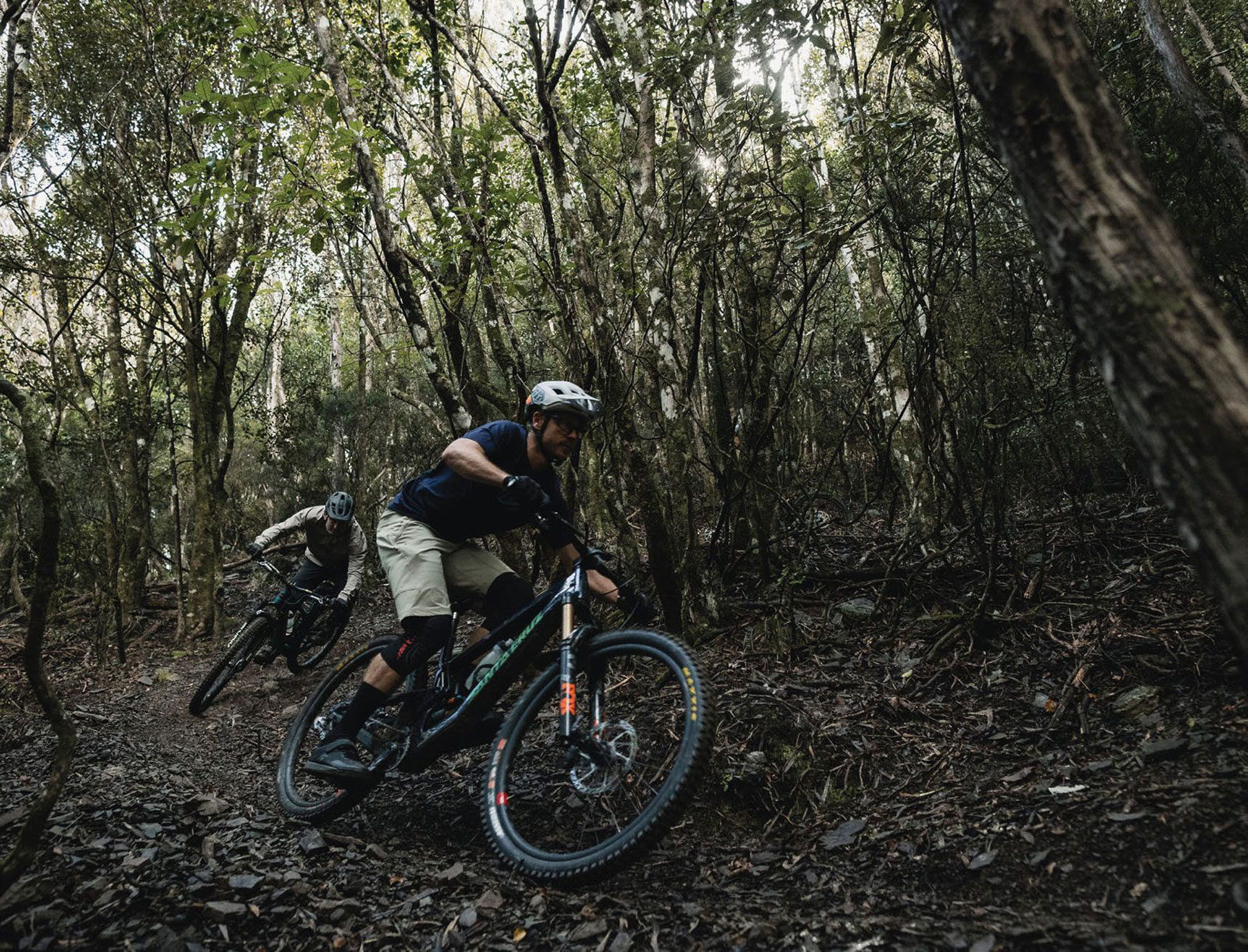
A quick pedal back to town and we headed for Tozetti, a local bakery-turned-cafe. All manner of ‘cabinet’ style treats were available, as well as an extensive menu. After re-caffeinating and a hearty lunch, we turned out sights for Te Ara Rere o Koata (Koata Rere) – “The flight path of Koata” -Nelson’s latest jump trail. Constructed by Queenstown’s jump-building experts, Elevate Trail Building, the 1.4km long trail features expertly sculpted jumps and berms of varying size and shape the entire way down. Most hits on the main line are rollable and multiple larger non-rollable side hits make this jump line perfect for anyone looking for air time. The trail likely won’t appear in a race any time soon, but it’s certainly worth cutting some laps if you’re in town for a few days.
After we realised our whips were weak and we’d exhausted our air miles, we headed for Two Thumb Brewing, hoping to spend the evening dining in the sun while sipping some fine brews. Unfortunately, it wasn’t to be, as they weren’t open on Mondays. On to Plan B. A short walk later we arrived at The Freehouse, a destination with a massive array of craft beer and simple food. If you know your Nelson Sauvin from your Citra, or your Weizenbier from your Gose, or you’re just keen to try something different, head for this converted chapel – it’s certainly one to put on your must-do list when in the area.
The next morning, after a solid feed and perfect coffee at Victus, we walked across the road to Gravity Nelson, loaded the shuttle and headed up for a lap of ‘629’. As we drove through the Maitai Valley, I checked the Trailforks app to see where we were headed and was astounded by how many trails were nearby. Within a 15-minute drive of the city centre there are a huge number of trails, many of them Grade 4, 5 and 6, yet when you’re riding them you feel like you could be deep in the backcountry somewhere. I’m positive there’s no other city in NZ with this volume of lengthy technical descents so close to town – so close in fact that from some you can roll with barely a pedal stroke from the bottom of the trail straight to the pub for après.
NUMBER OF STAGES: EIGHT 2020
“BY 2016, MAMMOTH HAD EARNED ITS TITLE AS THE MOST DEMANDING ENDURO RACE IN THE COUNTRY, WITH THEN THREE-TO-SIX-MINUTE LONG STAGES ACROSS TWO DAYS.
TAKING THE START LINE WERE A HOST OF THE COUNTRY’S TOP RIDERS, MANY OF WHOM HAD SPENT SEASONS RACING INTERNATIONALLY.”
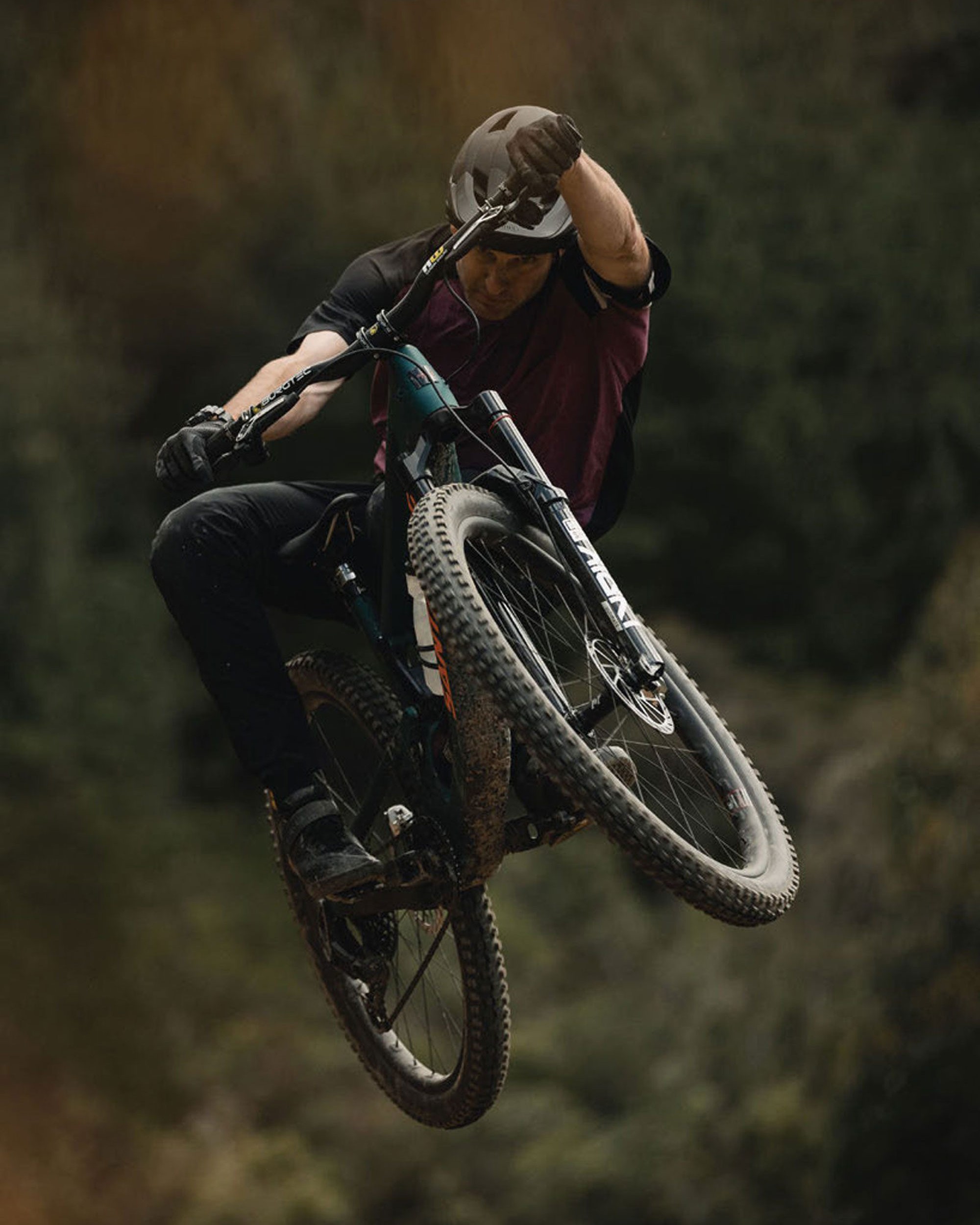
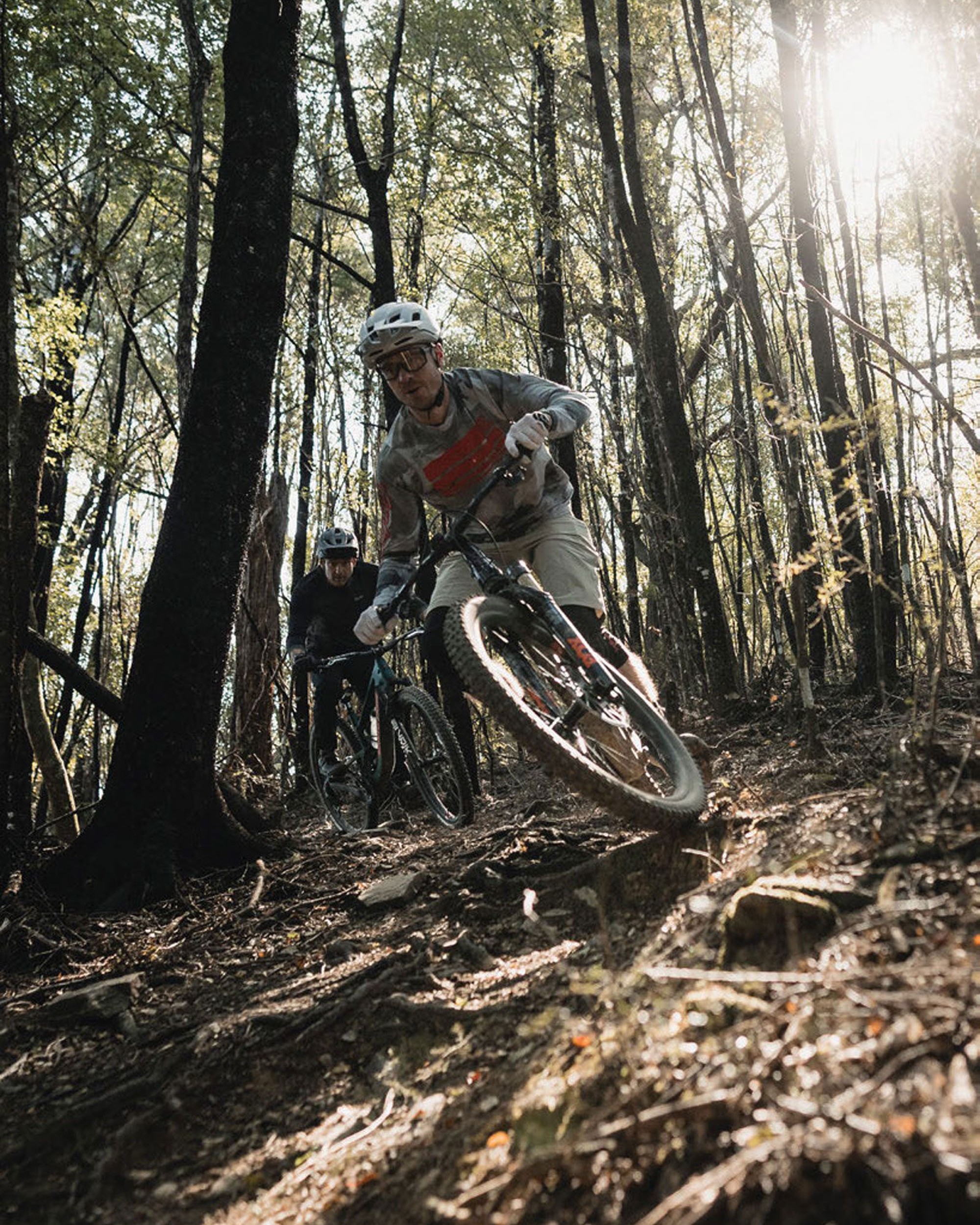
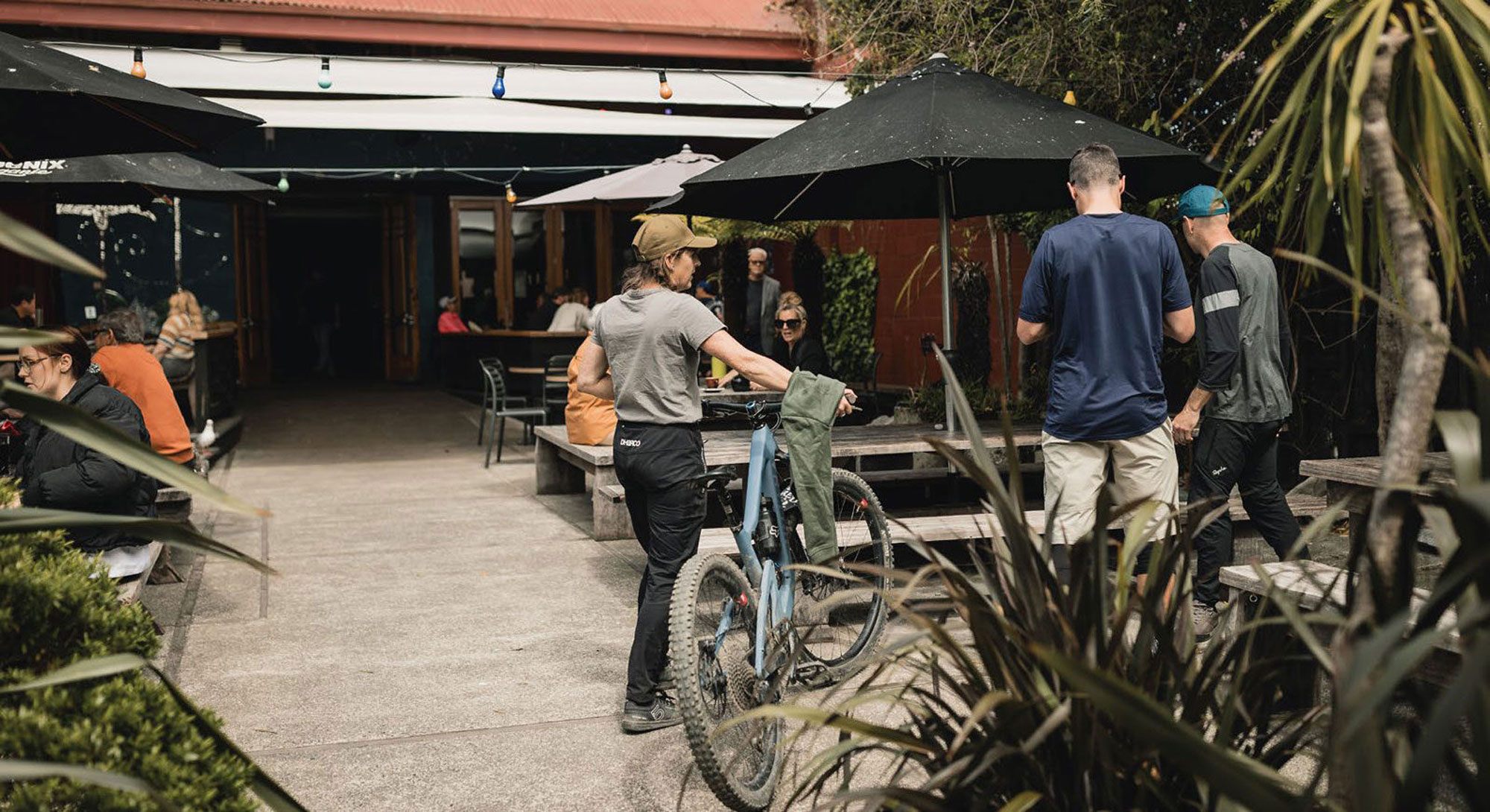
From the peak of the access road, ‘629’ drops into the bush and it’s “game on”. After just a couple of turns, you’re over some roots and straight into steep, loose sections – it’s spicy no doubt. Fortunately, just like Butters, the few crux moves are broken up by some mellow sections, allowing you to recompose, let your arm pump subside, and prepare for the next stretch of tech. Again, several steep, dropping turns are key sections, although with catch berms where required – it’s all pretty achievable if you keep a lid on your speed; release the brakes and things can quickly get buck-wild! Lower down, under pines, the trail mellows out for a period, and some fun flow takes over before dropping through native once again, eventually spitting you out on the banks of the Maitai River, a perfect spot to get your cramping arms working again with a mid-ride dip – ideal after the 524 vertical meters you just dropped.
Riding from 629 back out the valley, we came to Amanda’s car. She cracked the boot and produced a chilly bin full of ice with some of Two Thumb Brewing’s finest nestled inside – a hoppy IPA brewed with ingredients grown not far from Nelson’s famed trails. For something a bit less intense, Two Thumb has brewed a beer specially for the NMTBC; ‘Single Track’ is a session IPA available at Two Thumb Nelson, perfect by the glass for a post-ride chill – or you can take some home in a rigger for later… maybe both?! For every pint poured, Two Thumb donates to the Nelson MTB Club, how good! We park up beside the river to enjoy our beer and reminisce on just how damn good the trails we’ve ridden are – we’ve not even scratched the surface of the area but the stoke is high!
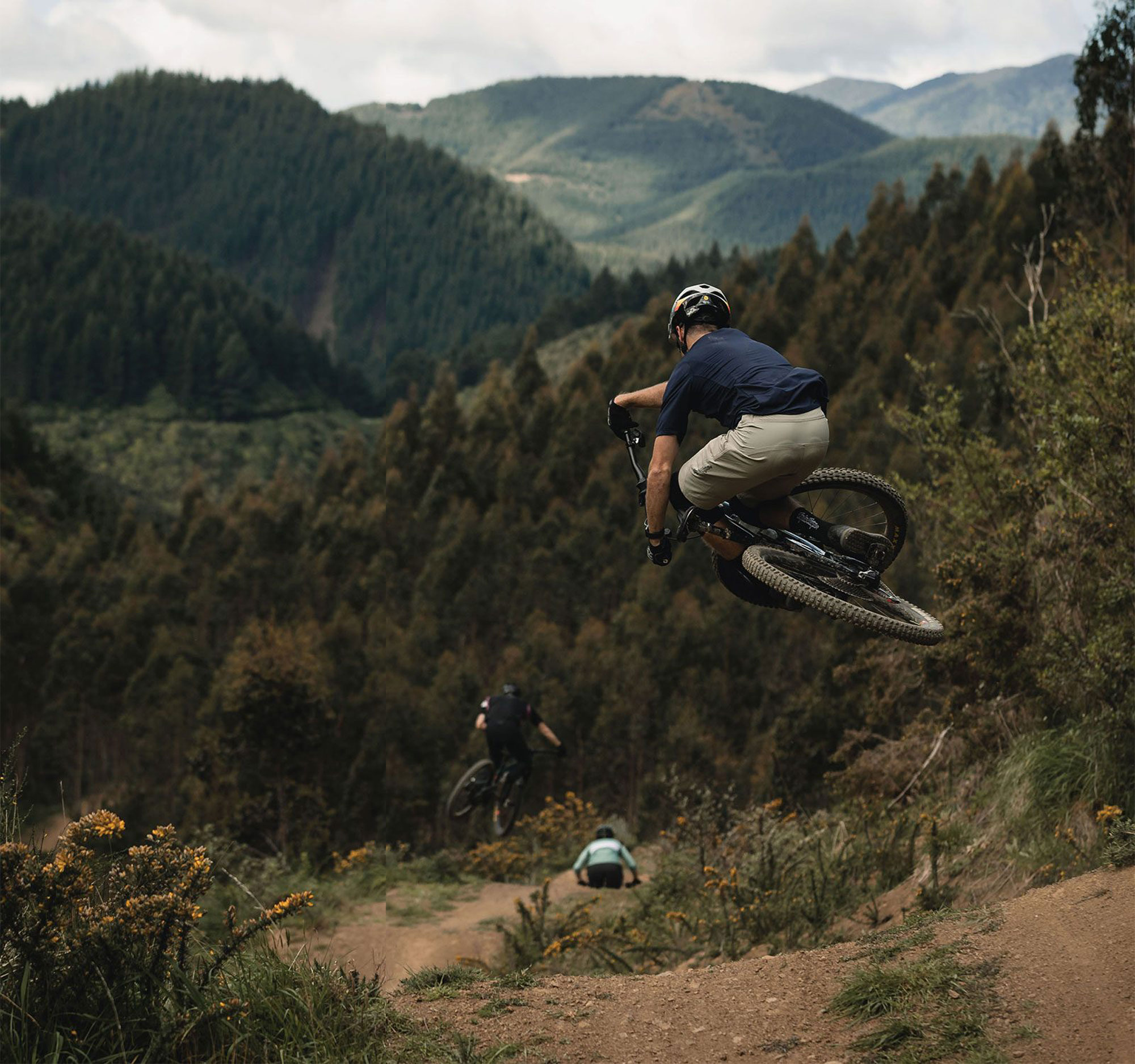
Nelson’s technical trails are a great way to stretch your ability and force you out of your comfort zone, ultimately making you a better rider. Thanks to smart trail building, the reality is that provided you’re in control and on course, most of the technical sections are doable given some caution and knowing your limits. There are two things to leave at home before riding some of these trails for the first time, though: ego and pride. Both could see you take a spill you could have otherwise avoided. Ride within your limits and don’t be too proud to walk a section if need be.
NMTBC is full of passionate people who run a slick operation, and their events always attract a tonne of locals but also a whole host of riders from around NZ who come to sample some epic racing and enjoy the town. Many come days early, or stay on after the event to ride what are truly some of NZ’s best trails in one of the most chilled towns in the country. Whether you’re gunning for the podium, or happy to just make it around the course, NMTBC events are always a great time both on and off the bike. Their event villages are hard to beat, and with quality food and coffee on offer the post-race vibes are always high, really adding to the community feel of the event.
For now, the Mammoth ‘24 course is filed away in the minds of a select few Nelson Mountain Bike Club committee members but, one thing’s for sure, they plan to uphold the legend of the Mammoth Enduro.
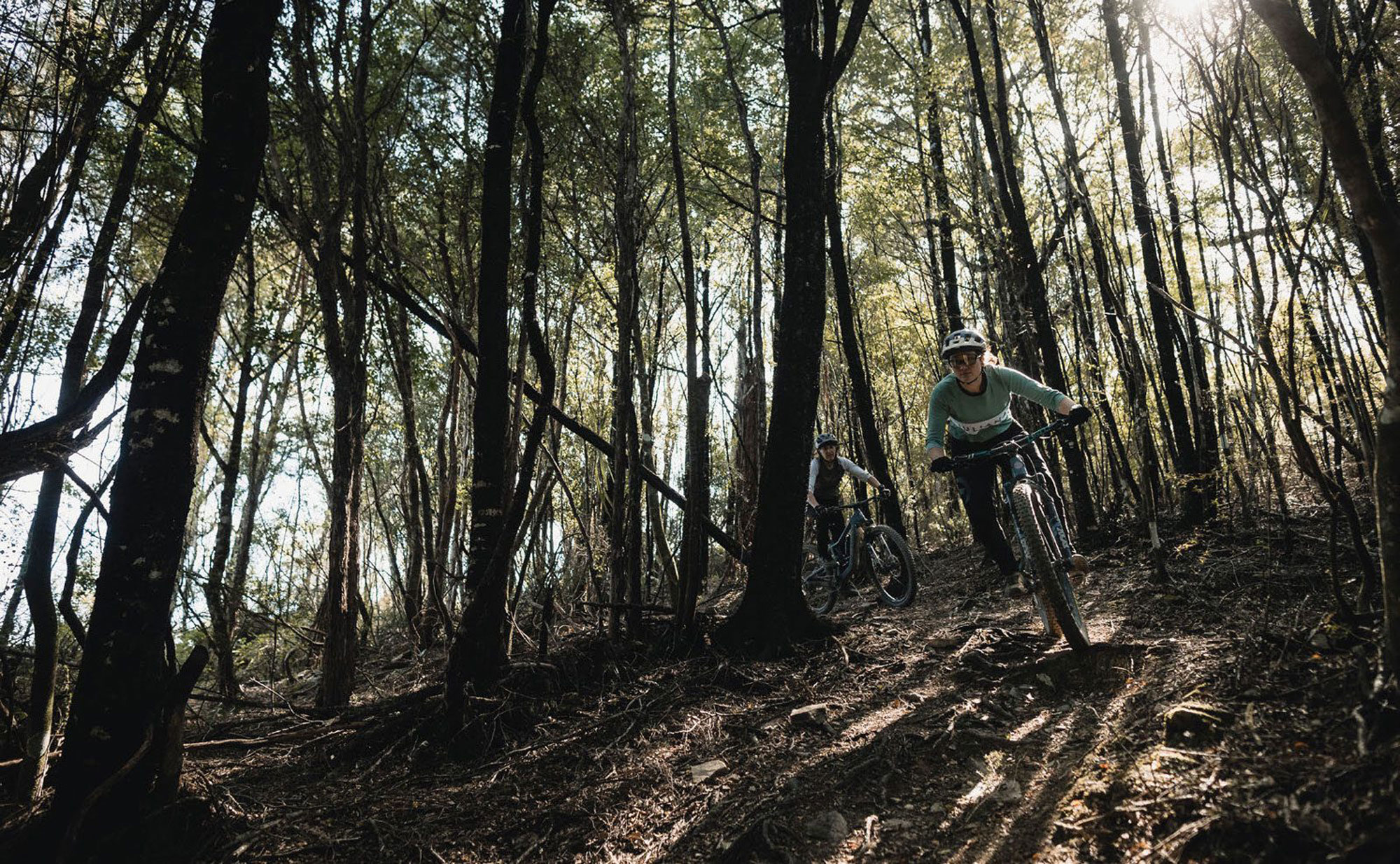
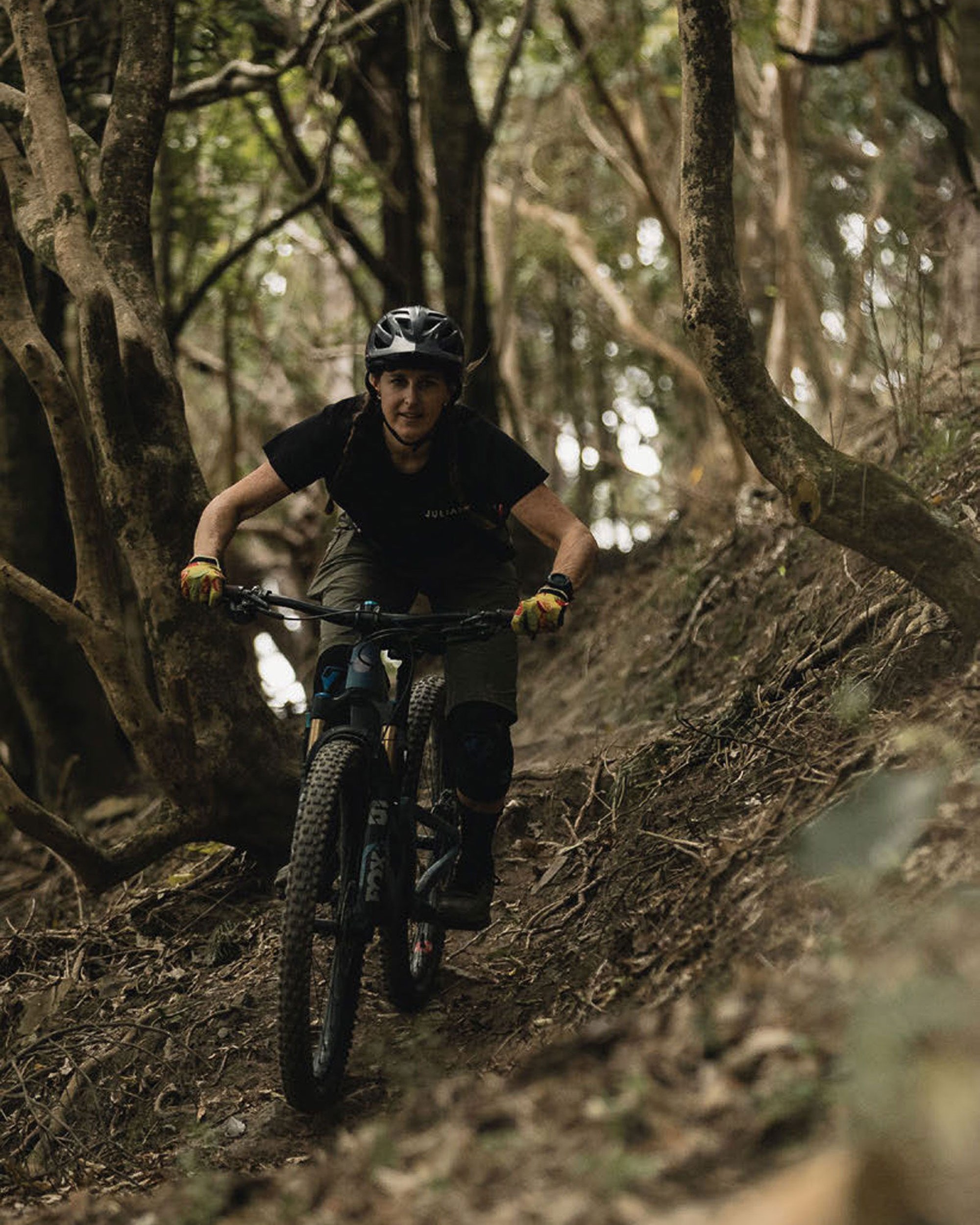
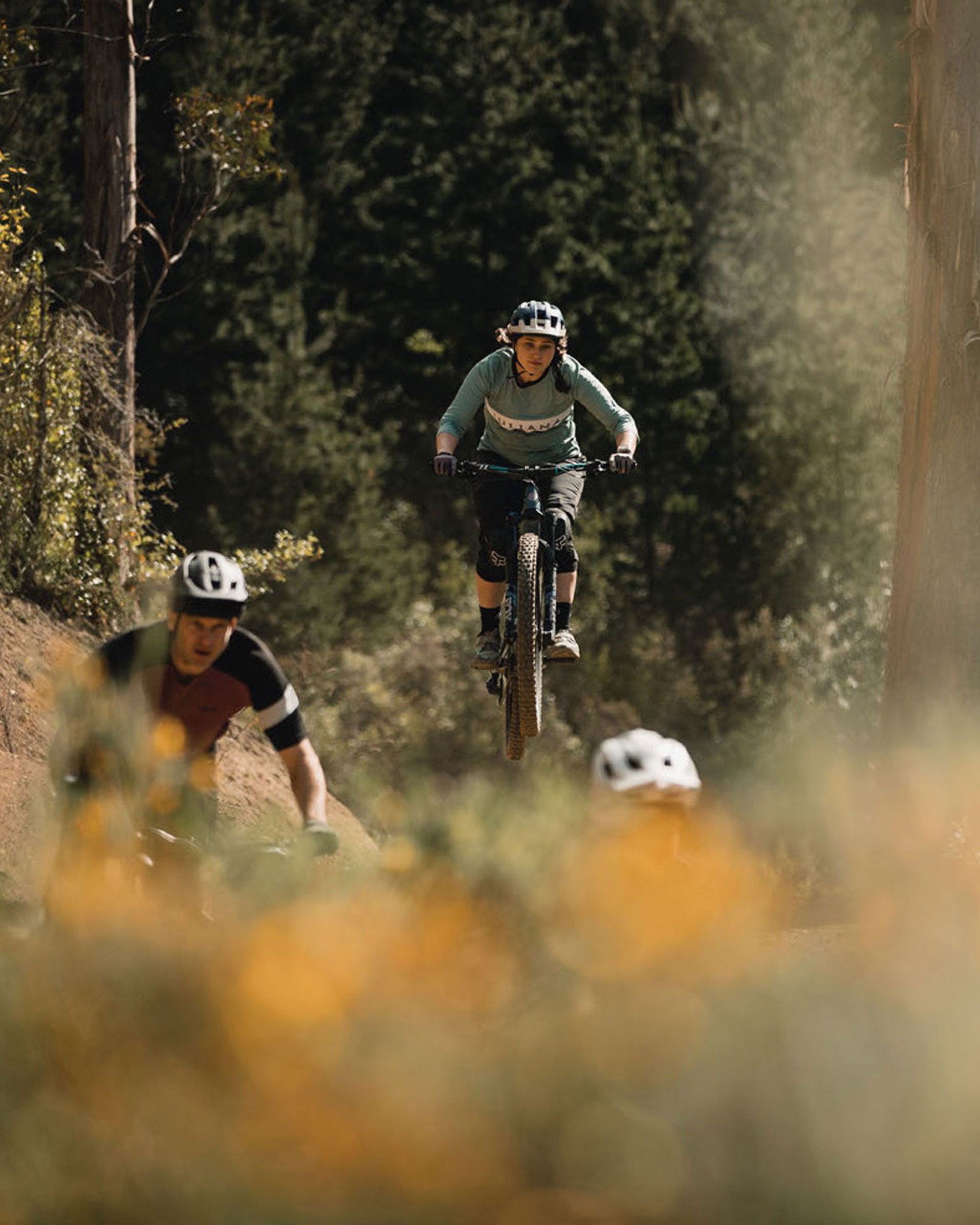
METERS OF DESCENDING: 1500+ 2022
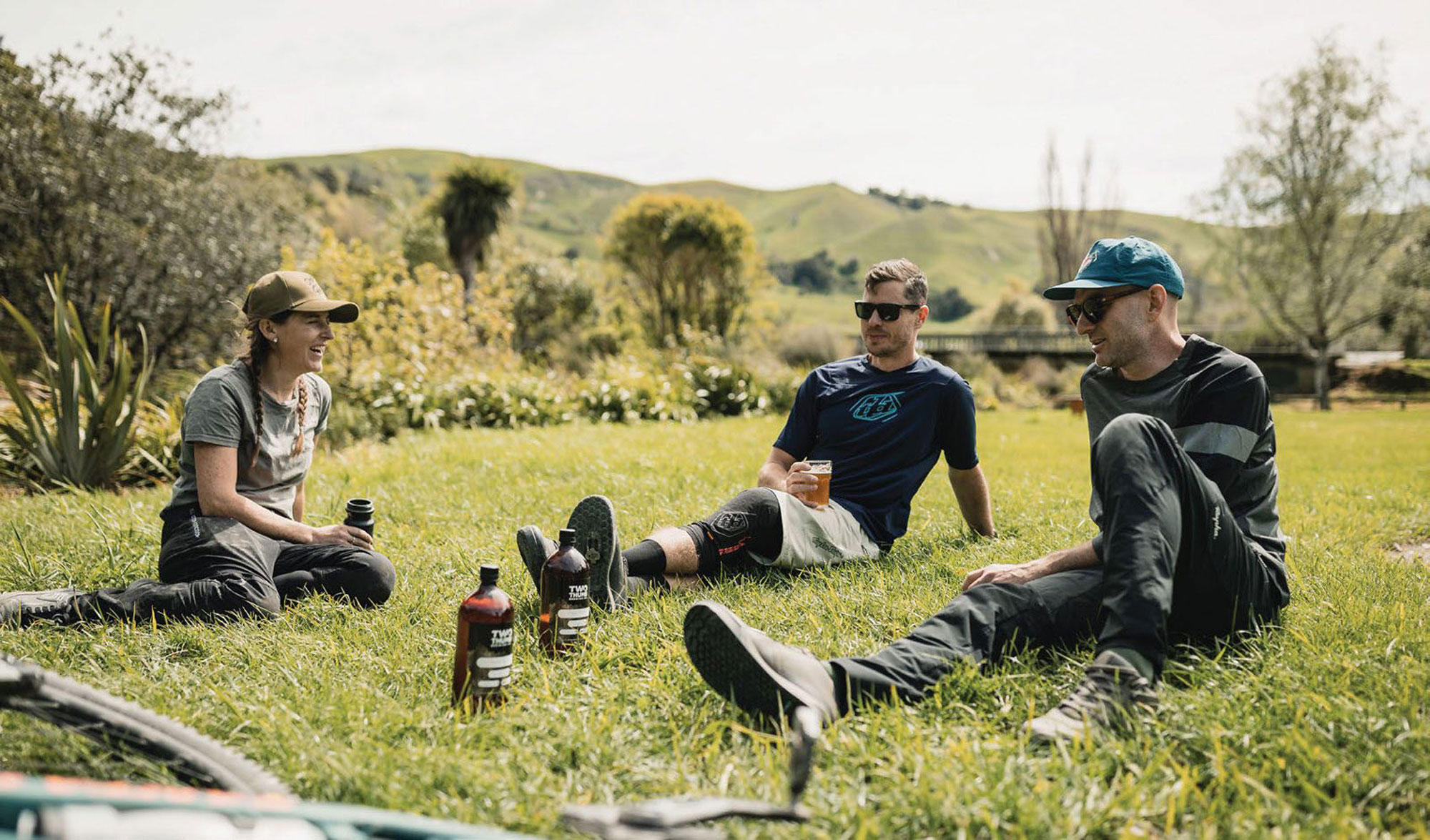

Welly on a Good day: They say you can't beat it.
Words Kelsey Timpany
Images Cameron Mackenzie
When people think of Wellington, the first thing that comes to mind usually isn’t ‘Mountain Biking’. Similarly, when EMTB-ING mentioned, most don’t immediately associate it with Wellington.
For someone who has based their mountain bike experiences around the meccas of Whistler, Queenstown and Rotorua, Wellington has never been on my radar as a biking destination – let alone on an eBike. When the opportunity fell into my lap, to sample Wellington’s trail network on a Pivot Cycles Shuttle LT, I was in.
Wellington – known for its tight, windy streets, tucked away cafes and bars, bright weatherboard villas perched on steep slopes and wind that blows right through your bones – is far from what an uneducated visitor would describe as a mountain biking playground. The best part, I soon learned – amongst the cool hummings of the city – are three quality mountain bike zones, that tick all the mountain biking boxes. Steep and tight; fast and flow; jumps and views; technical root chunder – and with most good networks leading directly to a pub or cafe.
MAKARA - POLHILL - MT VIC.
The mission: ride and sample as much of Wellington’s goodness in the space of an afternoon and on one battery charge. Easy.
The team of choice: Latham Collet, local Wellington shredder, fresh off his first season Privateering in Europe. Latham is your classic Welly young gun: heaps of style, fit as anything from the Wellington streets, and a tidy mullet. Cam McKenzie was tasked as day director and responsible for finding the trendiest bars and cafes – although Latham’s recommendation of a Brumby’s smoko was probably a highlight.
Our choice of Pivots played a valuable role in our Wellington mission. I opted for the Pivot Shuttle LT, a formidable machine that promised to deliver stability and control with playfulness on the zones we were about to explore. Latham, on the other hand, went for the Pivot Shuttle SL, which he reckoned felt exactly like his trail bike, with the convenient battery assist to take on the windy Welly roads.
It started like any other Wellington day: wet and windy. We had to pivot (pun intended) our plans drastically to avoid the torrential downpour. Cam and I put our heart rates in the red zone from one too many decent coffees at Cafe Neo, and did the classic pre-bike faffing at Pedal Project, where Latham conveniently works. The heavens parted and we were finally on our way to explore the cityscape.
First up was Makara Hill, a zone known for its tight singletrack against the backdrop of native bush and panoramic views. The usual 45-minute climb from the city was quartered thanks to boost mode and it felt like we were on top of Wellington in no time at all. On a good day you can see the South Island, and the start of the snowcapped Southern Alps, however, today we could only see as far as each other. Despite the morning’s weather tantrum, it was impressive to see many Wellingtonians out enjoying Makara Hill – doused in mud and wrapped up – as though it was a normal day. The weather definitely makes you tougher around these parts of the world and that was apparent from the hardy riders on the tracks.
Anticipating muck, we were pleasantly surprised to find the trails rode epically when wet. We were treated to tight singletrack, with natural side hits that started exposed and ended in dank native bush. Here, the Pivot Shuttles showcased the ideal blend of power and playfulness, especially for Latham who was throwing the LT around like it was his Firebird. Makara set the tone and pace for the afternoon; we were all stoked and excited to unlock the other zones. A quick pit stop at Brumby’s bakery to smash a mince and cheese pie, and we were on our way to zone number two: Polhill Reserve.
Smack bang in the heart of Wellington, this was just a convenient quick link away on the eBikes, through the city streets. There is nothing more satisfying than riding on a busy street, matching the traffic speed – convince me otherwise. The Pivot Shuttles were up for the job, getting up to effortless speeds of 50km whilst winding between cars and traffic lights. The reserve’s mountain bike trails, with their natural terrain, winding routes, and technical challenges, was another exciting opportunity to put the eBikes to the test. The Shuttles allowed us to navigate the terrain with ease but also punish the corners and chunder with playfulness and ease that truly defines Polhill. Latham and I had another sweet session of ripping corners, navigating steps, steeps and rocks, and finding the little hidden trail relics such as baby dolls and car parts, that make Polhill iconic.
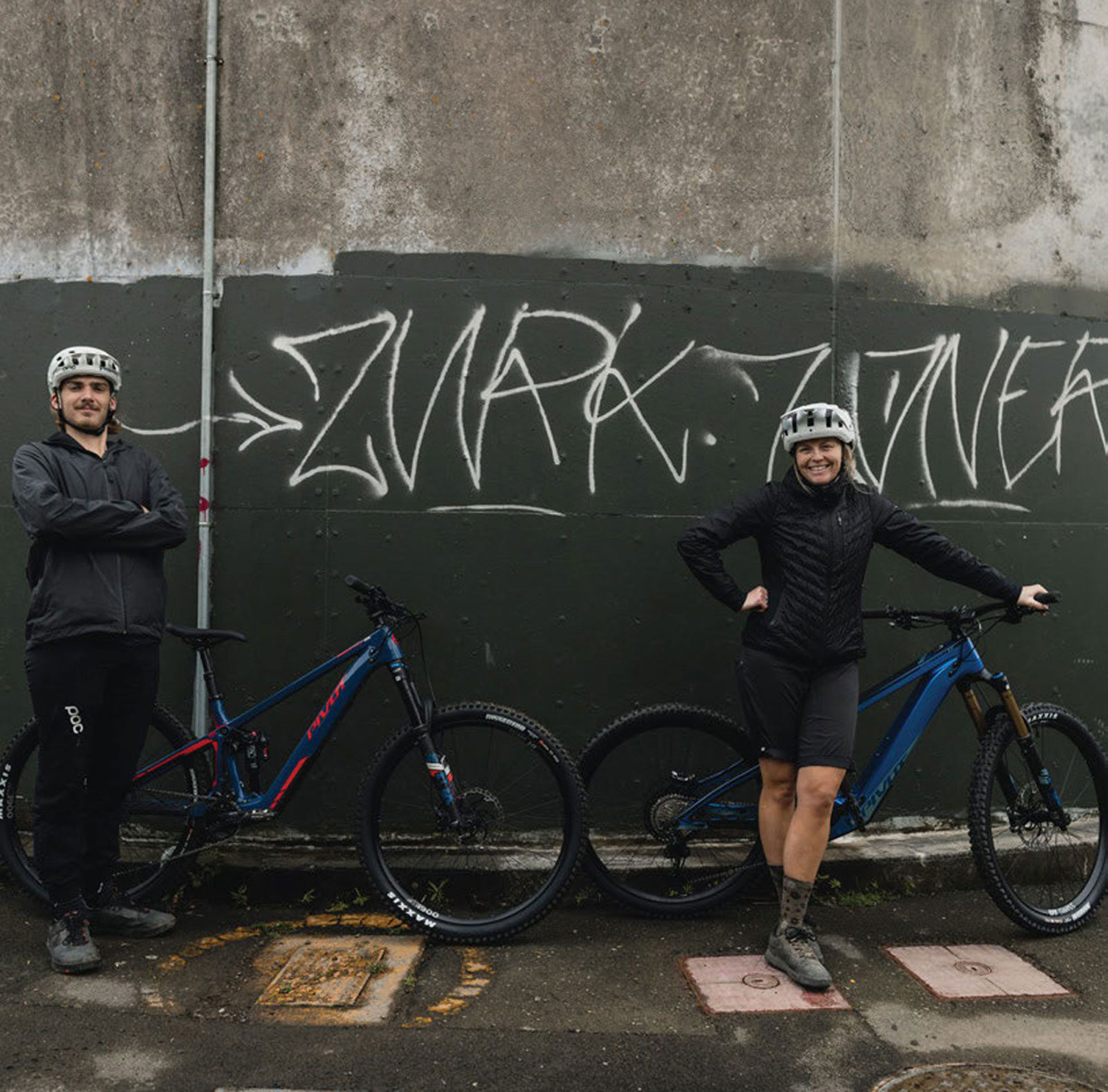
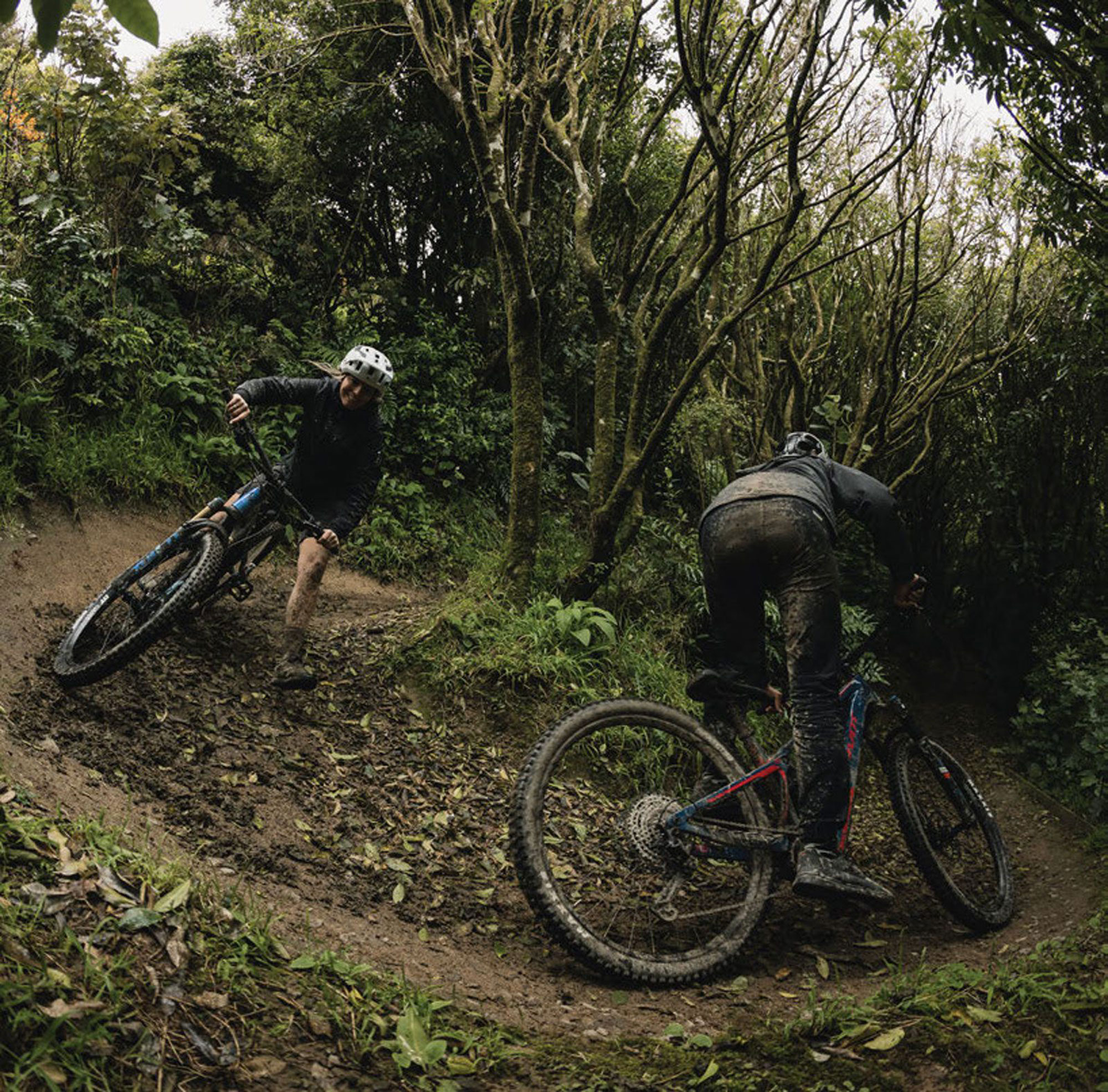
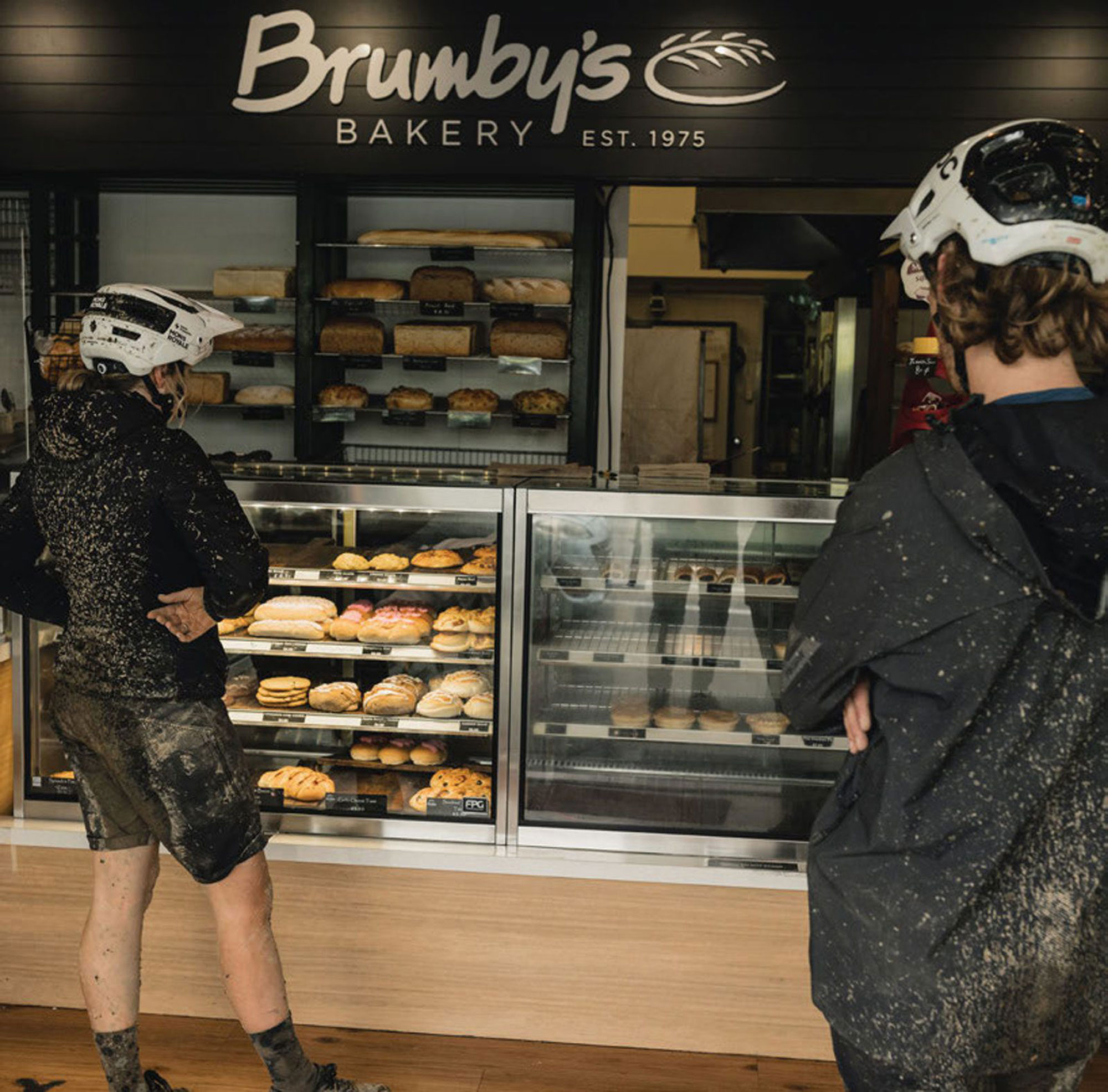
“WE WERE TREATED TO TIGHT SINGLETRACK, WITH NATURAL SIDE HITS THAT STARTED EXPOSED AND ENDED IN DANK NATIVE BUSH.”

We found some jumps that the local kids have been labouring on over the winter, lined with shark fins and drops, that I admittedly was too much of a baby to try. Latham held down the fore, and greased them all with style and ease. For an onlooker, no one would suspect he was actually on an eBike. It was awesome to see the love and care put into these jumps by the grommies, and a testament to the quality of shredders coming out of the city.
After exploring two zones, it was well and truly time for a beer. Luckily for us, Polhill Reserve trails basically pop you straight out to Garage Project, one of the top tier craft breweries in the city. Cam and I went for classic hazy styles while young Latham – who is still on his beer journey – opted for a sweet tequila sunrise vibe. He’ll get there eventually. The taphouse was a melting pot for students, hipsters, professionals – and filthy mountain bikers like us. No one batted an eyelid at our mud-crusted faces and bums.
With refreshments annihilated and tanks full, it was time to hit Mount Victoria, or the Big V, but not without a few urban hits for Latham. Stairs? Who needs them when you can jump them on an eBike? The Shuttle LT battery had only dropped one bar despite already covering 1500m of climbing over four hours. With a couple of hours of daylight left, it was time to really put the eBikes to the test and see what juice we could suck out of them.
“STEEP AND TIGHT; FAST AND FLOW; JUMPS AND VIEWS; TECHNICAL ROOT CHUNDER - AND WITH MOST GOOD NETWORKS LEADING DIRECTLY TO A PUB OR CAFE.”
Mount Vic proved to be the most technical and challenging riding of the day. Latham led us directly to the wettest, steepest roots -proud to show us Wellington’s finest chunder. Despite the wet and buttery clay, Latham owned the lines and greased them with ease. We sampled the jump line with good sized tables that flowed really well. The best part is you can lap the jumpline on the road and fill your boots with airtime – double points on an eBike! By the time we were finished with Mount Vic (well, it actually finished me) it was dark and most definitely time for a well-earned feed. Wairoa Brewery in Hataitai was the natural choice, where we were welcomed by another cool Welly bartender and a group of ‘fun mums’, whose decibels were increasing with each round. We demo’d some Burger Fuel in the brewery and debriefed about the epic afternoon that was had. Bellies full, legs medium-rare-tired, arms exhausted, and in complete darkness, it was time to cruise back to where we left the cars -at the bottom of Makara. No problem with batteries, with enough juice to weave through traffic and city goers gearing up for a boozey night in the city. A highlight was witnessing Latham’s cat-like reflexes when he nearly crashed into a street sign at full speed.
I came to Wellington with a neutral attitude about what our mission had in store, albeit with a hint of skepticism that the city could meet all my expectations for a mountain biking adventure. My eyes have well and truly been opened to the world of eBiking; the volume and quality of riding that can be achieved in one wet afternoon, while maintaining a high standard of excellence and sophistication. Teamed with an epic crew of Latham and Cam, the seamless blend of eBikng meeting epic Wellington trails is absolutely one for the books.
Welly on a good day: they say you can’t beat it. Welly on a typical day and with an eBike, I will wholeheartedly back that you can’t beat it.
THE TAPHOUSE WAS A MELTING POT FOR STUDENTS, HIPSTERS, PROFESSIONALS - AND FILTHY MOUNTAIN BIKERS LIKE US. NO ONE BATTED AN EYELID AT OUR MUD-CRUSTED FACES AND BUMS.
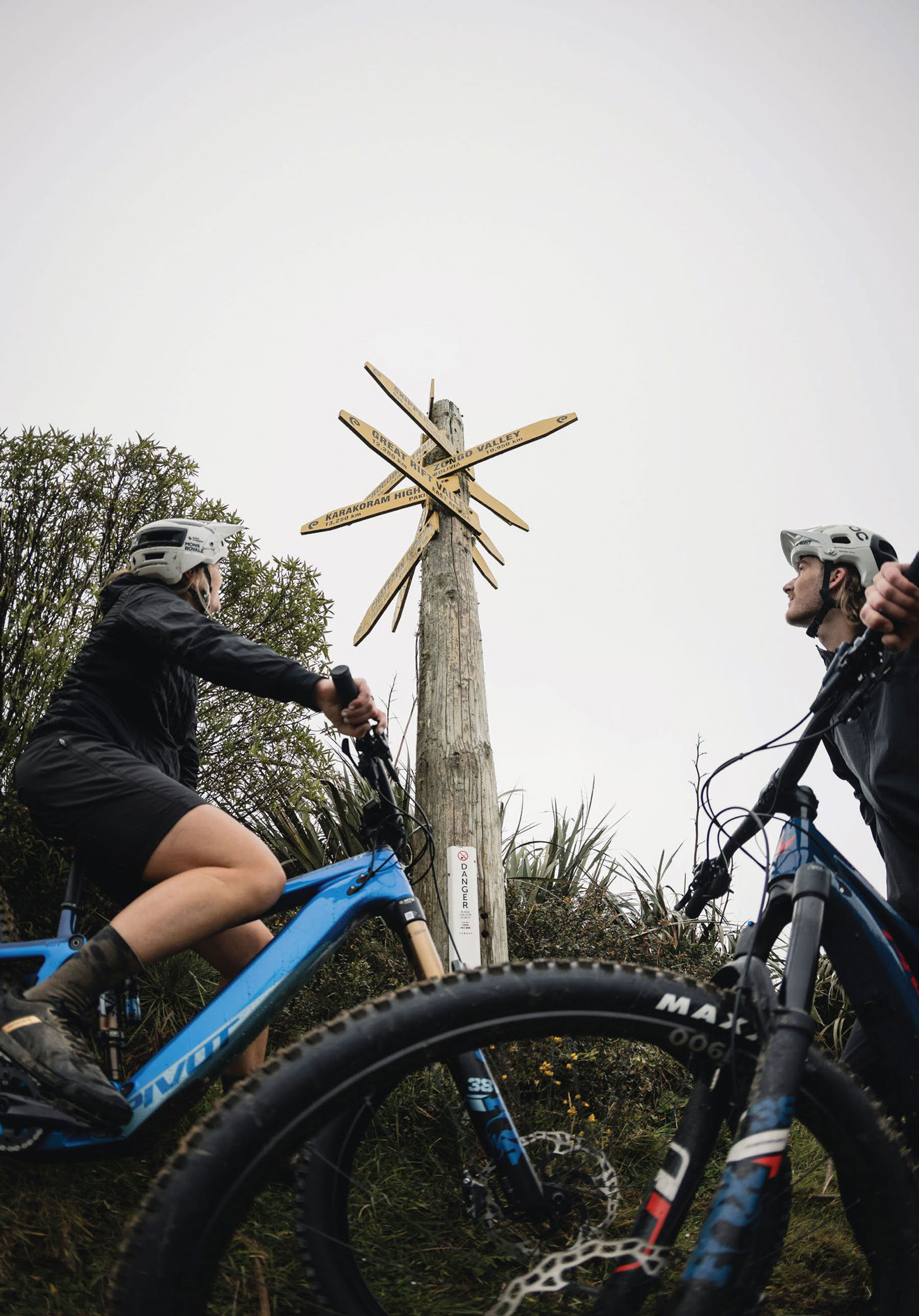
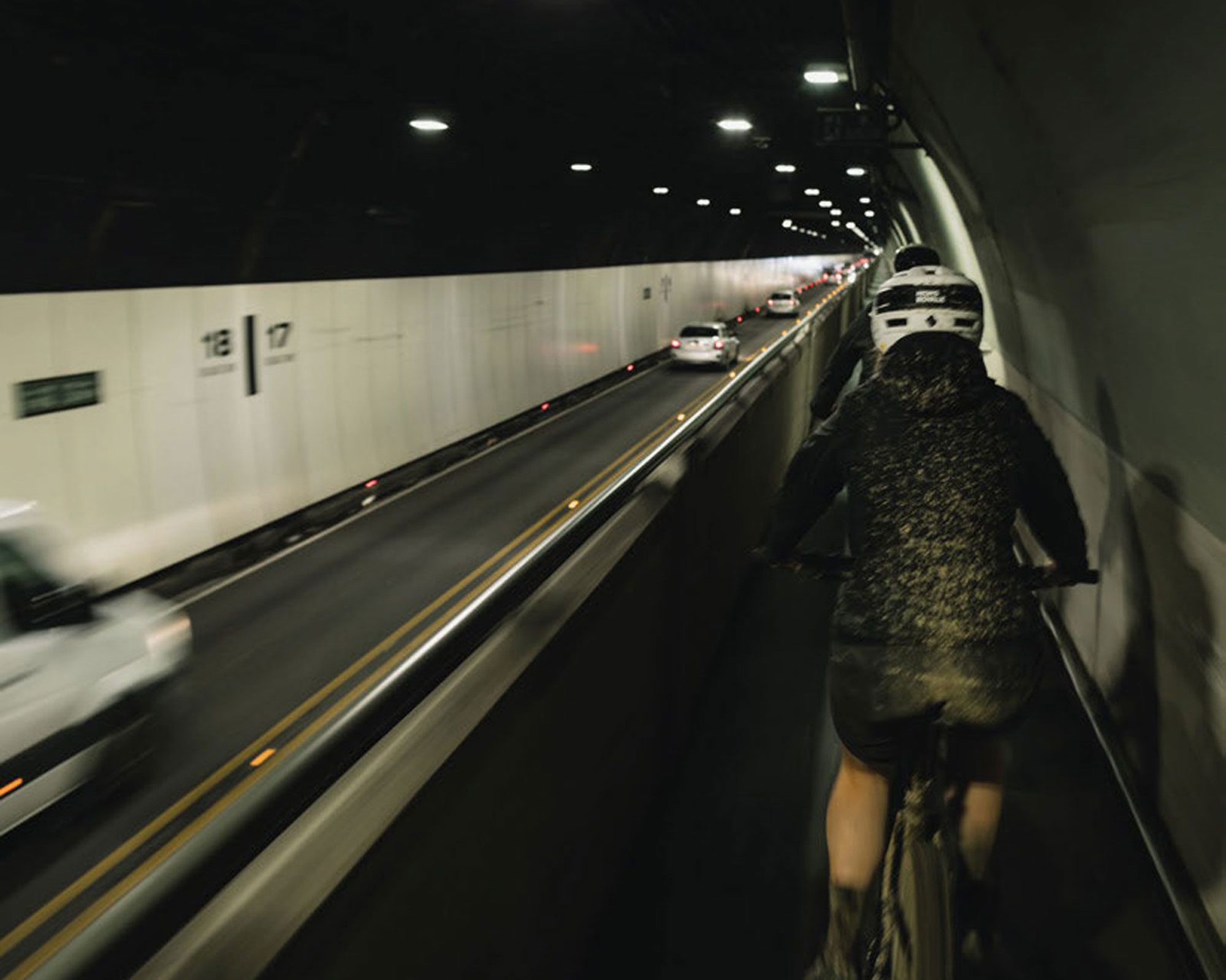
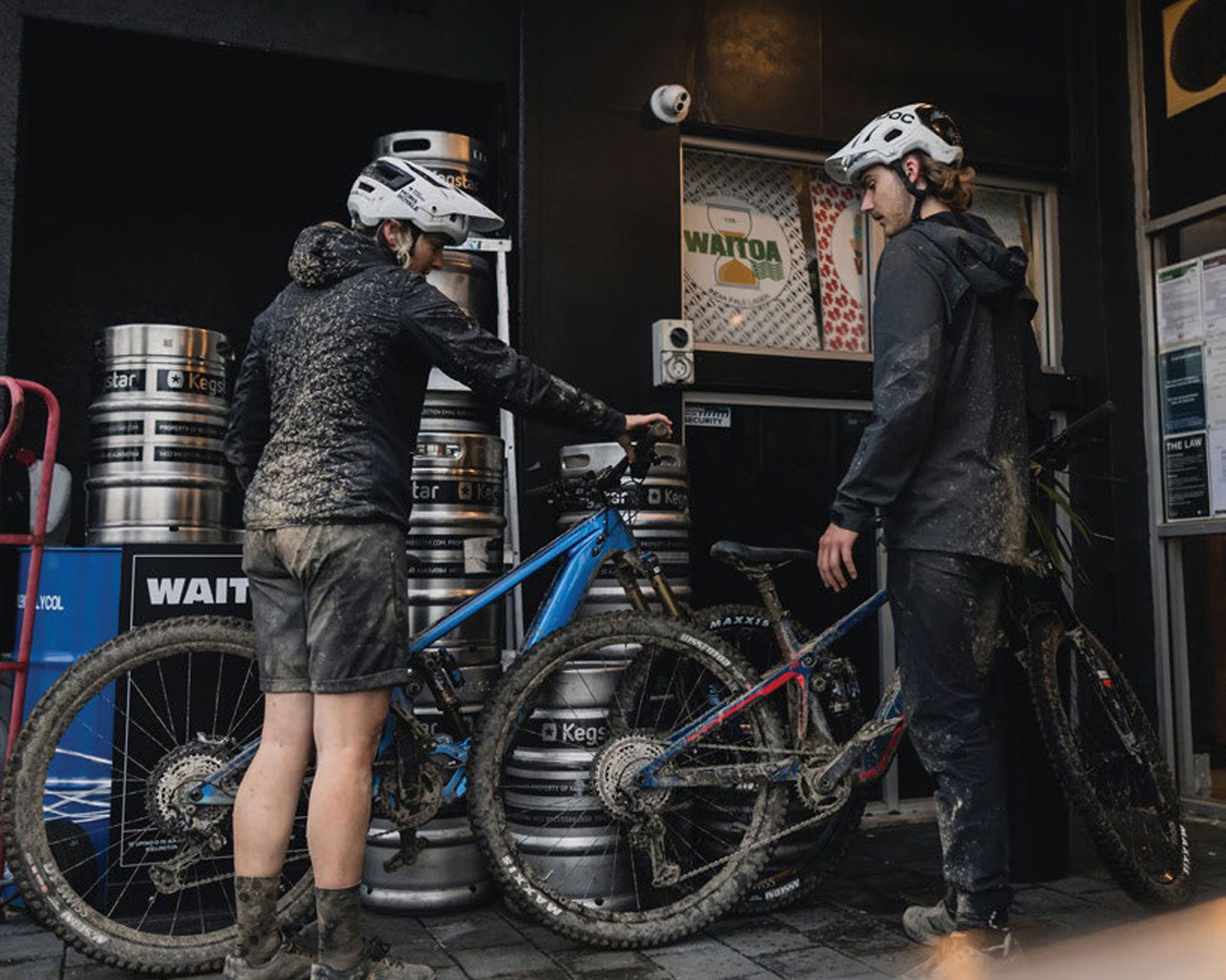
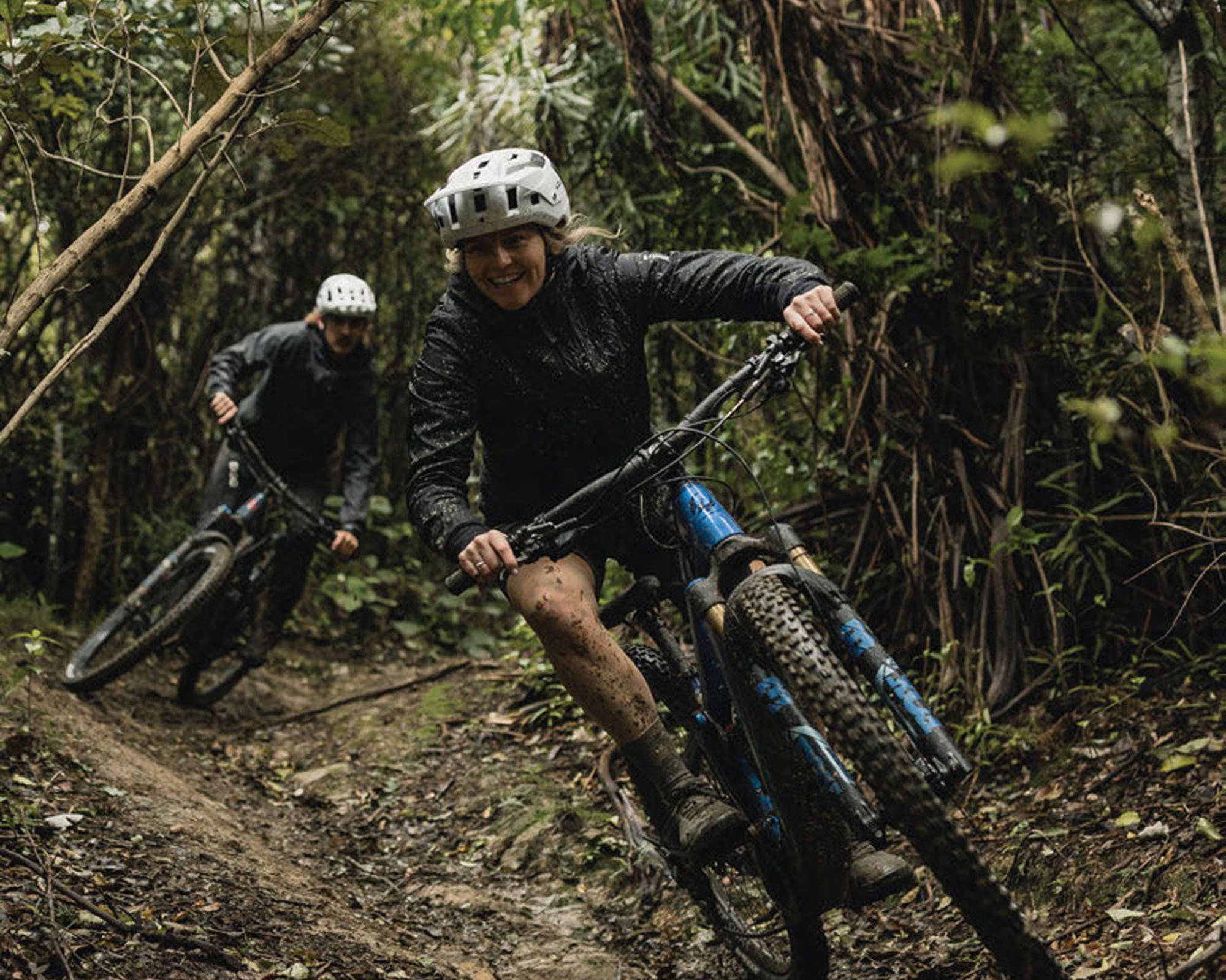
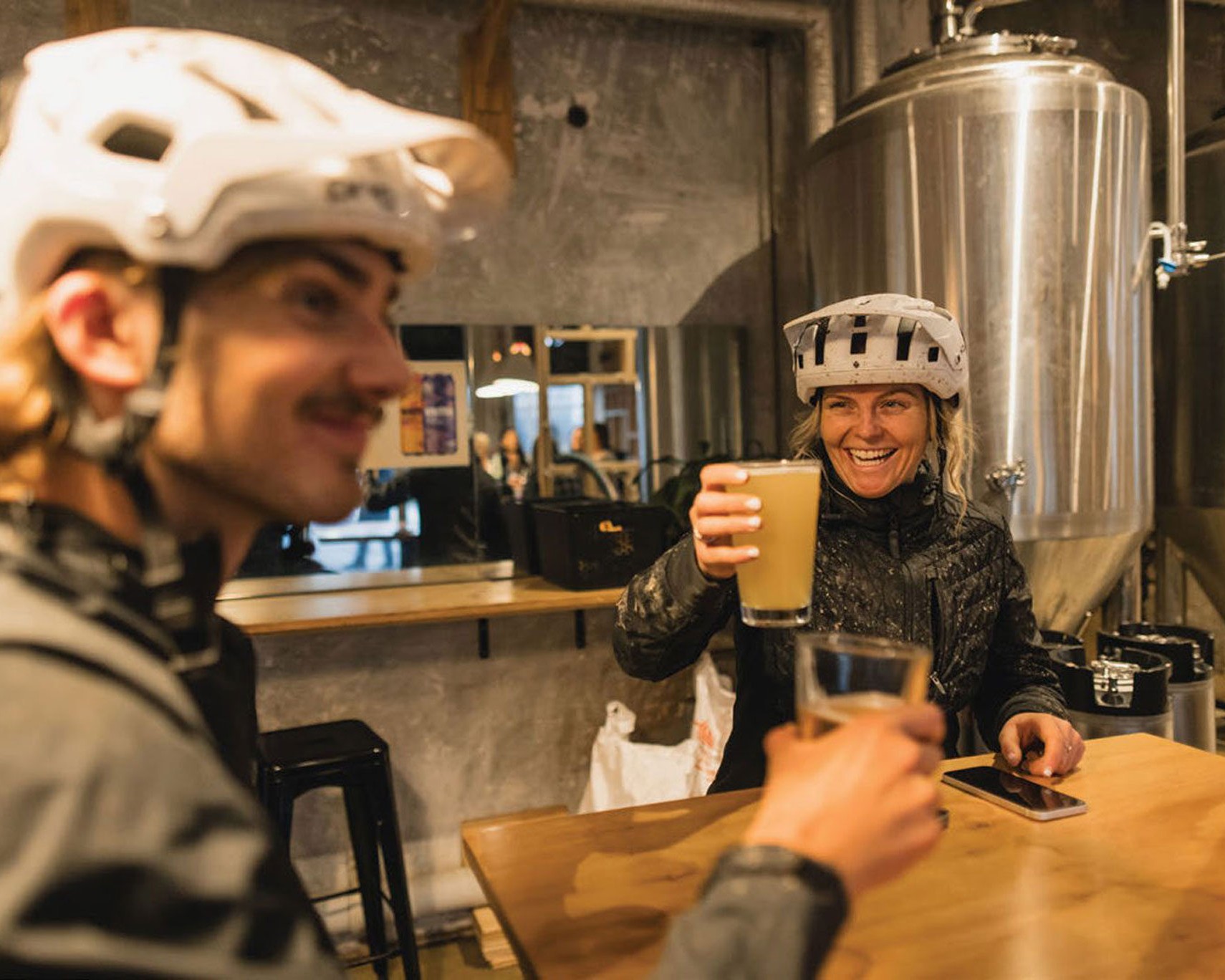

Musings Issue 110
Words and illustration by Gaz Sullivan
“What I saw when we went for a day in Taupo was mind-boggling…”
We live in Rotorua. We came here for the forest, the trails, the lakes, and the space. It’s great to be able to go to the trails whenever the mood strikes me, which is most of the time. Many visits to the same place do not take the shine off – for me, anyway.
Even so, sometimes it’s good to go somewhere else and, for us, that is often Taupo.
Just north of town is a small, but beautifully formed, mountain bike park everybody calls Craters.
The trails surround a thermal area that was created as a side effect of the bores that drive the Wairakei thermal power station. It is called Craters of the Moon, and that is a fair sort of description of the place.
We have been riding there since the late 1980s, and the trails have evolved, slowly increasing in length and variety.
Craters has a character of its own. With a few exceptions, the trails are narrow and have a carpet of pine needles that results from fairly light traffic. There is not much elevation available, but the builders have been very creative with their use of what they have.
The thing that sets Craters apart for me, is the connectivity of the place and the way it is integrated with the trails that run along both sides of the Waikato River. A rider can set out from town – and I mean the centre of Taupo city – and ride singletrack to the mountain bike park. Then, they can ride trails for hours without having to ride any forestry road at all. The trails are not very technical, but they are fun – and there are places hidden away in Craters that are downright amazing.
A trail drops into a tight little canyon with a waterfall tumbling out from under a tangle of huge boulders, and I take the same photo of my bike parked next to it every time I visit. Can’t help myself. Another follows a different canyon past cliffs on one side and a precipitous drop to a thermally heated stream on the other. Climbing singletrack rewards riders with big views of mountains and lake. It’s easy to clock up 50 kilometres of continuous trail in an outing, maybe many more. I always run out of gas before I run out of options.
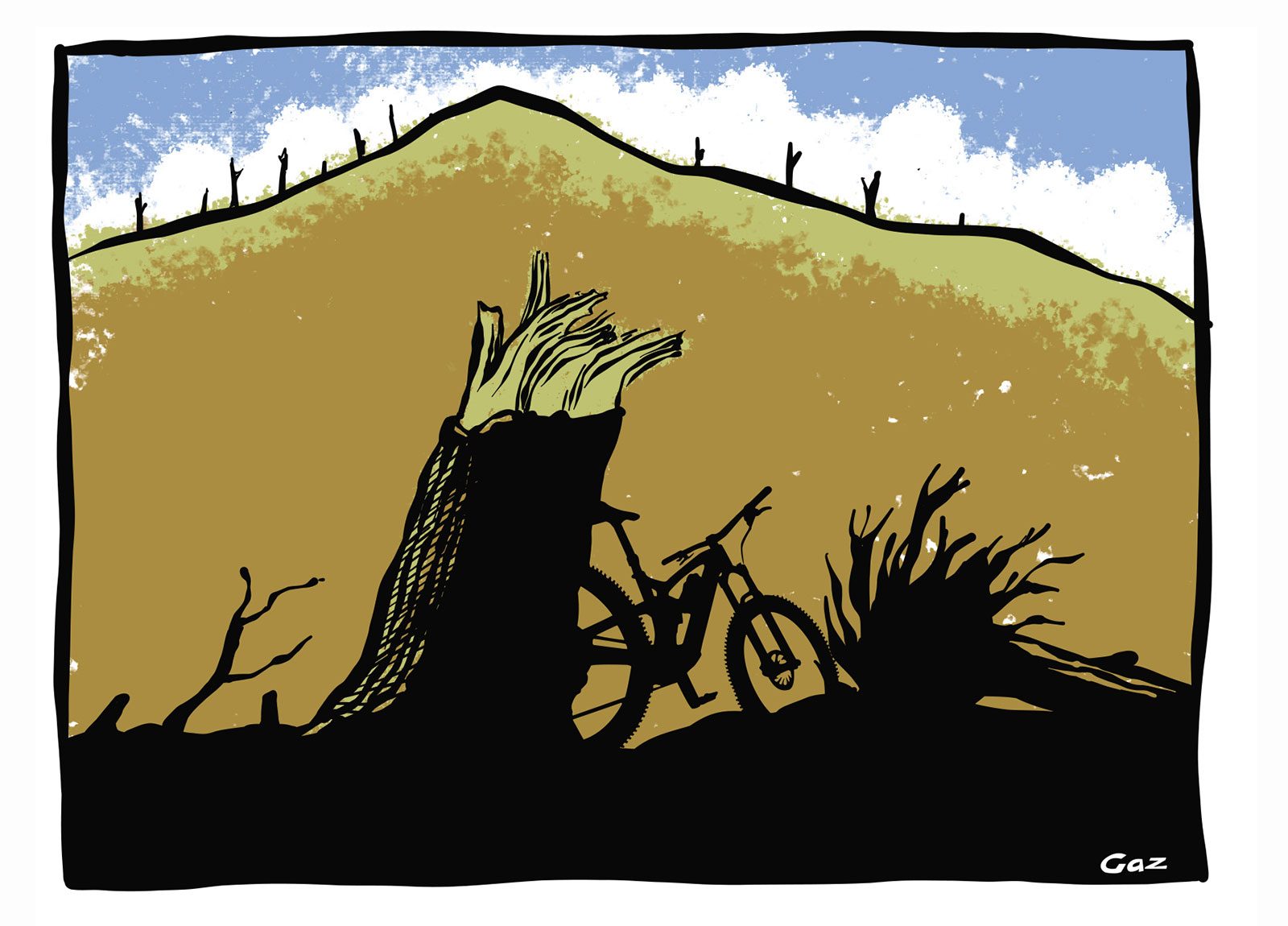
The Hub is a well-designed carpark with a cafe directly opposite. It sits one flat white and a muffin from town, and has a nifty underpass taking riders under the main road into Taupo – and the trails beyond.
Well, it did until Cyclone Gabrielle visited. The underpass is there, but Craters is closed. The carnage and heartbreak caused by that storm is well documented, and it may sound petty to be talking about the damage to a mountain bike park when so many people have lost everything, but what I saw when we went for a day in Taupo was mind- boggling. For those of us who dodged any of the serious effects of Gabrielle, it is a sobering snapshot of what happened.
The park was closed when we visited, and it will be for a long time. Could be six months, maybe more. The friendly woman in the Hub Cafe reckoned there were 15,000 trees down. The hill that is visible from the Hub looked like an active logging site, nearly every tree on the exposed slope facing the highway was laying on the ground. Areas further south had trees uprooted, trees snapped off halfway up, or split down the middle. It is an unbelievable mess, and under it all is a lovingly nurtured network of trails.
The ride down the river, past Huka Falls to Aratiatia and back along the other side, has reopened and so that is where I went. It’s bizarre how some trees stand, completely undamaged, right next to a tangle of trunks and branches that are torn and smashed.
Like most places we ride, the trails at Craters didn’t make themselves. They were built by the usual combination of passionate volunteers, people drafted in to help passionate volunteers, and – on a few sections – commercial trail builders. It took decades of applied enthusiasm because, while new stuff was being created, the existing stuff had to be maintained. Again, like most places we go to ride.
Some of the places we go, that are shared with commercial foresters, get periodically wrecked by harvesting – but that is the deal. We know that going in. We try to get started in young trees, to get maximum bang out of our thinly stretched buck.
When a weather system lays waste to a whole trail system in one go, those plans become meaningless. The work in front of the Taupo team is huge – a restoration job that won’t really start until the forestry crews have done what they can to make the place safe to enter.
One thing you can be sure of: it will re-open. The same enthusiasm that built Craters, will rebuild it.
